What Is Critical Thinking in Social Work?
- Career Advice
- Frustrations at Work
- ')" data-event="social share" data-info="Pinterest" aria-label="Share on Pinterest">
- ')" data-event="social share" data-info="Reddit" aria-label="Share on Reddit">
- ')" data-event="social share" data-info="Flipboard" aria-label="Share on Flipboard">

Effective Communication Skills for Social Workers
Top 5 values in being a social worker, legal & ethical issues facing social workers.
- Clinical Model Vs. Developmental Model in Social Work Practice
- Emotional Stresses of Being a Clinical Psychologist
Social workers offer many valuable services to people in need. They provide mental health services, such as diagnosis and counseling, advocate for clients who are unable to do so themselves, provide direct care services, such as housing assistance and help clients obtain social services benefits. The ability to remain open-minded and unbiased while gathering and interpreting data, otherwise known as critical thinking, is crucial for helping clients to the fullest extent possible. Critical thinking is one of the top skills required to be a successful social worker.
Meaning of Critical Thinking
The Foundation for Critical Thinking describes critical thinking as the ability to analyze, synthesize, evaluate and apply new information. Critical thinking in social work practice involves looking at a person or situation from an objective and neutral standpoint, without jumping to conclusions or making assumptions. Social workers spend their days observing, experiencing and reflecting on all that is happening around them.
In your role as a social worker, you obtain as much data as possible from interviews, case notes, observations, research, supervision and other means. Social workers must be self-aware of their feelings and beliefs. Stereotypical biases or prejudices must be recognized and not allowed to influence thinking when assembling a plan of action to help your clients to the highest level possible.
Importance of Critical Thinking
Critical thinking is important for the development of social work skills in direct practice. Social workers help people from all walks of life and come across people or populations with experiences, ideas and opinions that often vary from their own culture and background. Clients may be misunderstood and misjudged if thinking critically does not take place in a social context.
Applying critical thinking and analysis in social work helps social workers formulate a treatment plan or intervention for working with a client. First, you need to consider the beliefs, thoughts or experiences that underlie your client's actions without making a snap decision. What seems crazy or irrational to you at first may in fact be better understood in the context of cultural and biopsychosocial factors that play a role in your client's life. Critical thinking helps you objectively examine these factors, consider their importance and impact on your course of action, while simultaneously maintaining professional detachment and a non-biased attitude.
Interrelated Critical Thinking Skills
To develop critical thinking skills as a social worker, you need to have the ability to self-reflect and observe your own behaviors and thoughts about a particular client or situation. Self-awareness, observation and critical thinking are closely intertwined and impact your ability to be an effective social worker. For example, observing your gut reactions and initial responses to a client without immediately taking action can help you identify transference and counter-transference reactions, which can have a negative or harmful impact on your client.
Self-reflection is particularly important when working with clients who have very different or very similar backgrounds and beliefs to your own. You don't want your abilities to be clouded by your own preconceived notions or biases. Likewise, you don't want to merge with a client with whom you over-identify because you come from very similar situations or have had similar experiences.
Purpose of Clinical Supervision
Social workers engage in clinical practice under professional supervision to hone their critical thinking abilities. According to the Administration for Children and Families , clinical supervision not only encourages critical thinking but also helps social workers develop other core social work skills. Clinical experiences focus on maintaining positive social work ethics, self-reflection and the ability to intervene in crises.
Many, if not most, social work settings require or, at least offer, the opportunity to participate in peer, individual or group supervision. Discussing your cases or clients with a supervisor or with colleagues can help you sort out your own opinions and judgments and prevent these issues from impacting your work.
- The Center for Critical Thinking: Defining Critical Thinking
- Administration for Children and Families: Clinical Supervision
Related Articles
Why acceptance is important as a social worker, how not to impose your values on clients, what are some assumptions for working as a social worker, skills needed to be a clinical social worker, distinguishing characteristics of social work, what qualities make a good developmental psychologist, social work interviewing skills, social counselor pay scale & education required, differences between psychologists & clinical social workers, most popular.
- 1 Why Acceptance Is Important as a Social Worker
- 2 How Not to Impose Your Values on Clients
- 3 What Are Some Assumptions for Working as a Social Worker?
- 4 Skills Needed to Be a Clinical Social Worker
- Technical Support
- Find My Rep
You are here
Critical Thinking and Professional Judgement for Social Work
- Lynne Rutter - Bournemouth University, UK
- Keith Brown - Bournemouth University, UK
- Description
Critical thinking can appear formal and academic, far removed from everyday life where decisions have to be taken quickly in less than ideal conditions. It is, however, a vital part of social work, and indeed any healthcare and leadership practice.
Taking a pragmatic look at the range of ideas associated with critical thinking, this Fifth Edition continues to focus on learning and development for practice. The authors discuss the importance of sound, moral judgement based on critical thinking and practical reasoning, and its application to different workplace situations; critical reflection, and its importance to academic work and practice; and the connection between critical thinking ideas and professionalism.
| ISBN: 9781526466990 | Electronic Version | Suggested Retail Price: $31.00 | Bookstore Price: $24.80 |
| ISBN: 9781526466969 | Paperback | Suggested Retail Price: $34.00 | Bookstore Price: $27.20 |
| ISBN: 9781526466952 | Hardcover | Suggested Retail Price: $112.00 | Bookstore Price: $89.60 |
See what’s new to this edition by selecting the Features tab on this page. Should you need additional information or have questions regarding the HEOA information provided for this title, including what is new to this edition, please email [email protected] . Please include your name, contact information, and the name of the title for which you would like more information. For information on the HEOA, please go to http://ed.gov/policy/highered/leg/hea08/index.html .
For assistance with your order: Please email us at [email protected] or connect with your SAGE representative.
SAGE 2455 Teller Road Thousand Oaks, CA 91320 www.sagepub.com
Good overview on foundational issues in social work eduction. Easy to read thus appropriate for ESL students. Chapter on critical style proved valuable as a guideline to literature reviews.
This book is written in such a way that it appears the authors are actually speaking to the students and in fact uses 'we' which is as if it is a collegial journey to learning. The content is relevent and is well informed, analytical in enough detail without being too intimidating for non-academic students.
This concise and clearly-written volume is useful across a range of early-career post-qualifying modules.
Very helpful introduction to some introductory reflective learning concepts.
Helpful addition to the students reading list for their unit of study
a concise, revised and accessible text for any NQSW practitioner re their evolving professional practice and beyond in terms of their continual professional development. Revisits key essential themes within a fresh context especially liked Chapters 3 and 4. A useful reference text for any Practice Educator, SW educator and ASYE assessor.
Preview this book
For instructors, select a purchasing option, related products.

Academia.edu no longer supports Internet Explorer.
To browse Academia.edu and the wider internet faster and more securely, please take a few seconds to upgrade your browser .
Enter the email address you signed up with and we'll email you a reset link.
- We're Hiring!
- Help Center

Thinking Like a Social Worker: Examining the Meaning of Critical Thinking in Social Work

Critical thinking is frequently used to describe how social workers ought to reason. But how well has this concept helped us to develop a normative description of what it means to think like a social worker? This critical review mines the literature on critical thinking for insight into the kinds of thinking social work scholars consider important. Analysis indicates that critical thinking in social work is generally treated as a form of practical reasoning. Further, epistemological disagreements divide 2 distinct proposals for how practical reasoning in social work should proceed. Although these disagreements have received little attention in the literature, they have important implications for social work practice.
Related Papers
Journal of Teaching in Social Work
Michaela Rogers
Empathy Study
Helena Rocha
Teresa Aurora Carmona Scott
Vol. 4(2), 1-7
Kathiresan Loganathan
Social Work as an applied discipline aims to 'help people to help themselves'. Its knowledge base originates and thrives on western theories, perspectives, models and dimensions of various other disciplines, which is applied within the vast realms of social work practice. Theories of social work are broadly categorized into two types. The first one relates to theories that help social workers to understand individuals and their problems in various settings such as family, group, community and society; and thus help these professionals to intervene effectively. The second one deals with practice theories which are derived from the field. Many of these western oriented theories overlook the importance of socio-economic, cultural and political milieu of the non-western societies. While applying these theories, the practitioners thus face a multitude of challenges; and hence they tend to become dogmatic in their perseverance towards goal achievement. This paper argues that if critical reflection is used as a method of theorization, it would provide an inclusive approach (bottomup) as against the rigid deductive empirical (top-down) theories.
EDULEARN Proceedings
Inês Casquilho-Martins
Jeremiah Nyongesa
Brian Cooper
Summary This study is a preliminary definitional study that examines the idea of literacy and critical thinking in social work practice, especially as it applies to evidenced-based practice. It is not a definitive study as such, but more an exploration of what would constitute literacy and critical thinking in social work practice especially in a changing policy framework that requires greater accountability for practice through an evidence-based approach. The paper accepts the proposition that the essence of literacy is the communication of an idea or concept in a way others who are not familiar with that idea are able to understand it. The study examined five related areas, which would be considered important for the basis the background understanding required to participate in the evidenced-based discourse. These are critical thinking, statistical literacy, data visualisation, data literacy and information literacy. Findings Whilst there are differences in what is understood as literacy of the various areas, there are also commonalities between each area. The emphasis that evidenced-based practice will require in the mode and method of argument to be used will be based on the principles of argument that arise will be influenced by critical thinking, statistical literacy, data visualisation, data literacy or information literacy. Application The application of this preliminary study to social work practice is how one views and communicates information and observations to a wider audience. It provides a basis for argument for social work practice to be able to participate in a discourse dealing with evidence-based practice whilst within the ethical and values framework of social work philosophy. Key Words Critical thinking, statistical literacy, data visualisation, information literacy, evidenced-based practice, social work, disadvantage, spatial literacy
The Routledge Handbook of Critical Social Work
Christopher Thorpe
This chapter critically considers the steady turn away from social theory within social work generally, and the unintended consequences of this for critical social work specifically. Historically, social theoretical concepts and forms of argumentation have played a decisive role in shaping the ideational and normative agenda of critical social work. As the relationship between social work and social theory has steadily broken down, however, the latter has become increasingly (mis-)understood and (mis-)represented by the former. Herein, the argument is made that current (mis-)conceptions of social theory divert attention away from the fact that social workers ‘do’ a form of critical social theorizing all the time, albeit in ways that are actively and institutionally misrecognised. Putting to work various social theoretical concepts and forms of argumentation, the chapter calls for critical social workers to (re-)present the relationship between social work and social theory to social workers. Doing so constitutes a crucial step towards ameliorating the intellectual conditions of reception for the critical social work message.
Critical Social Work Praxis
Sobia Shaheen Shaikh
Chapter 1 of Critical Social Work Praxis, written by Brenda A. LeFrancois, Teresa Macias, and Sobia Shaheen Shaikh
Loading Preview
Sorry, preview is currently unavailable. You can download the paper by clicking the button above.
RELATED PAPERS
Families in Society: The Journal of Contemporary Social Services
Lorraine Moya Salas
Social Sciences
Charlie O'Bree
RELATED TOPICS
- We're Hiring!
- Help Center
- Find new research papers in:
- Health Sciences
- Earth Sciences
- Cognitive Science
- Mathematics
- Computer Science
- Academia ©2024
- Find My Rep
You are here
Critical Thinking and Professional Judgement for Social Work
- Lynne Rutter - Bournemouth University, UK
- Keith Brown - Bournemouth University, UK
- Description
Critical thinking can appear formal and academic, far removed from everyday life where decisions have to be taken quickly in less than ideal conditions. It is, however, a vital part of social work, and indeed any healthcare and leadership practice.
Taking a pragmatic look at the range of ideas associated with critical thinking, this Fifth Edition continues to focus on learning and development for practice. The authors discuss the importance of sound, moral judgement based on critical thinking and practical reasoning, and its application to different workplace situations; critical reflection, and its importance to academic work and practice; and the connection between critical thinking ideas and professionalism.
Good overview on foundational issues in social work eduction. Easy to read thus appropriate for ESL students. Chapter on critical style proved valuable as a guideline to literature reviews.
This book is written in such a way that it appears the authors are actually speaking to the students and in fact uses 'we' which is as if it is a collegial journey to learning. The content is relevent and is well informed, analytical in enough detail without being too intimidating for non-academic students.
This concise and clearly-written volume is useful across a range of early-career post-qualifying modules.
Very helpful introduction to some introductory reflective learning concepts.
Helpful addition to the students reading list for their unit of study
a concise, revised and accessible text for any NQSW practitioner re their evolving professional practice and beyond in terms of their continual professional development. Revisits key essential themes within a fresh context especially liked Chapters 3 and 4. A useful reference text for any Practice Educator, SW educator and ASYE assessor.
Preview this book
For instructors.
Please select a format:
Select a Purchasing Option
- Electronic Order Options VitalSource Amazon Kindle Google Play eBooks.com Kobo
What Are Critical Thinking Skills and Why Are They Important?
Learn what critical thinking skills are, why they’re important, and how to develop and apply them in your workplace and everyday life.
![what is critical thinking in social work [Featured Image]: Project Manager, approaching and analyzing the latest project with a team member,](https://d3njjcbhbojbot.cloudfront.net/api/utilities/v1/imageproxy/https://images.ctfassets.net/wp1lcwdav1p1/1SOj8kON2XLXVb6u3bmDwN/62a5b68b69ec07b192de34b7ce8fa28a/GettyImages-598260236.jpg?w=1500&h=680&q=60&fit=fill&f=faces&fm=jpg&fl=progressive&auto=format%2Ccompress&dpr=1&w=1000)
We often use critical thinking skills without even realizing it. When you make a decision, such as which cereal to eat for breakfast, you're using critical thinking to determine the best option for you that day.
Critical thinking is like a muscle that can be exercised and built over time. It is a skill that can help propel your career to new heights. You'll be able to solve workplace issues, use trial and error to troubleshoot ideas, and more.
We'll take you through what it is and some examples so you can begin your journey in mastering this skill.
What is critical thinking?
Critical thinking is the ability to interpret, evaluate, and analyze facts and information that are available, to form a judgment or decide if something is right or wrong.
More than just being curious about the world around you, critical thinkers make connections between logical ideas to see the bigger picture. Building your critical thinking skills means being able to advocate your ideas and opinions, present them in a logical fashion, and make decisions for improvement.

Build job-ready skills with a Coursera Plus subscription
- Get access to 7,000+ learning programs from world-class universities and companies, including Google, Yale, Salesforce, and more
- Try different courses and find your best fit at no additional cost
- Earn certificates for learning programs you complete
- A subscription price of $59/month, cancel anytime
Why is critical thinking important?
Critical thinking is useful in many areas of your life, including your career. It makes you a well-rounded individual, one who has looked at all of their options and possible solutions before making a choice.
According to the University of the People in California, having critical thinking skills is important because they are [ 1 ]:
Crucial for the economy
Essential for improving language and presentation skills
Very helpful in promoting creativity
Important for self-reflection
The basis of science and democracy
Critical thinking skills are used every day in a myriad of ways and can be applied to situations such as a CEO approaching a group project or a nurse deciding in which order to treat their patients.
Examples of common critical thinking skills
Critical thinking skills differ from individual to individual and are utilized in various ways. Examples of common critical thinking skills include:
Identification of biases: Identifying biases means knowing there are certain people or things that may have an unfair prejudice or influence on the situation at hand. Pointing out these biases helps to remove them from contention when it comes to solving the problem and allows you to see things from a different perspective.
Research: Researching details and facts allows you to be prepared when presenting your information to people. You’ll know exactly what you’re talking about due to the time you’ve spent with the subject material, and you’ll be well-spoken and know what questions to ask to gain more knowledge. When researching, always use credible sources and factual information.
Open-mindedness: Being open-minded when having a conversation or participating in a group activity is crucial to success. Dismissing someone else’s ideas before you’ve heard them will inhibit you from progressing to a solution, and will often create animosity. If you truly want to solve a problem, you need to be willing to hear everyone’s opinions and ideas if you want them to hear yours.
Analysis: Analyzing your research will lead to you having a better understanding of the things you’ve heard and read. As a true critical thinker, you’ll want to seek out the truth and get to the source of issues. It’s important to avoid taking things at face value and always dig deeper.
Problem-solving: Problem-solving is perhaps the most important skill that critical thinkers can possess. The ability to solve issues and bounce back from conflict is what helps you succeed, be a leader, and effect change. One way to properly solve problems is to first recognize there’s a problem that needs solving. By determining the issue at hand, you can then analyze it and come up with several potential solutions.
How to develop critical thinking skills
You can develop critical thinking skills every day if you approach problems in a logical manner. Here are a few ways you can start your path to improvement:
1. Ask questions.
Be inquisitive about everything. Maintain a neutral perspective and develop a natural curiosity, so you can ask questions that develop your understanding of the situation or task at hand. The more details, facts, and information you have, the better informed you are to make decisions.
2. Practice active listening.
Utilize active listening techniques, which are founded in empathy, to really listen to what the other person is saying. Critical thinking, in part, is the cognitive process of reading the situation: the words coming out of their mouth, their body language, their reactions to your own words. Then, you might paraphrase to clarify what they're saying, so both of you agree you're on the same page.
3. Develop your logic and reasoning.
This is perhaps a more abstract task that requires practice and long-term development. However, think of a schoolteacher assessing the classroom to determine how to energize the lesson. There's options such as playing a game, watching a video, or challenging the students with a reward system. Using logic, you might decide that the reward system will take up too much time and is not an immediate fix. A video is not exactly relevant at this time. So, the teacher decides to play a simple word association game.
Scenarios like this happen every day, so next time, you can be more aware of what will work and what won't. Over time, developing your logic and reasoning will strengthen your critical thinking skills.
Learn tips and tricks on how to become a better critical thinker and problem solver through online courses from notable educational institutions on Coursera. Start with Introduction to Logic and Critical Thinking from Duke University or Mindware: Critical Thinking for the Information Age from the University of Michigan.
Article sources
University of the People, “ Why is Critical Thinking Important?: A Survival Guide , https://www.uopeople.edu/blog/why-is-critical-thinking-important/.” Accessed May 18, 2023.
Keep reading
Coursera staff.
Editorial Team
Coursera’s editorial team is comprised of highly experienced professional editors, writers, and fact...
This content has been made available for informational purposes only. Learners are advised to conduct additional research to ensure that courses and other credentials pursued meet their personal, professional, and financial goals.
- Grades 6-12
- School Leaders
NEW: Classroom Clean-Up/Set-Up Email Course! 🧽
What Is Critical Thinking and Why Do We Need To Teach It?
Question the world and sort out fact from opinion.
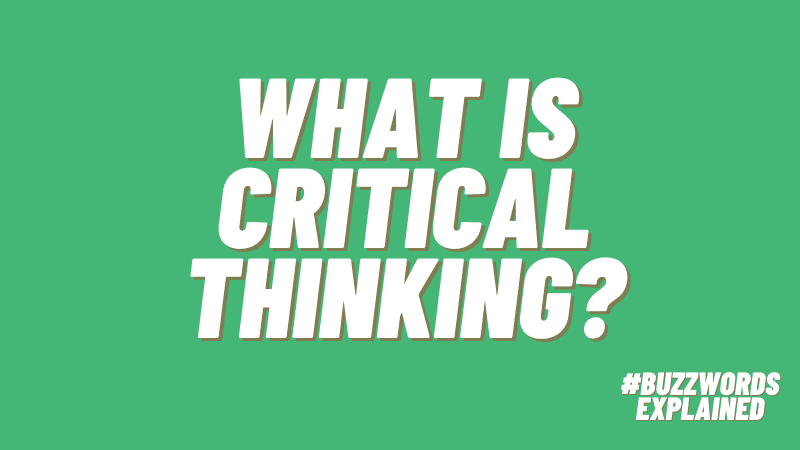
The world is full of information (and misinformation) from books, TV, magazines, newspapers, online articles, social media, and more. Everyone has their own opinions, and these opinions are frequently presented as facts. Making informed choices is more important than ever, and that takes strong critical thinking skills. But what exactly is critical thinking? Why should we teach it to our students? Read on to find out.
What is critical thinking?
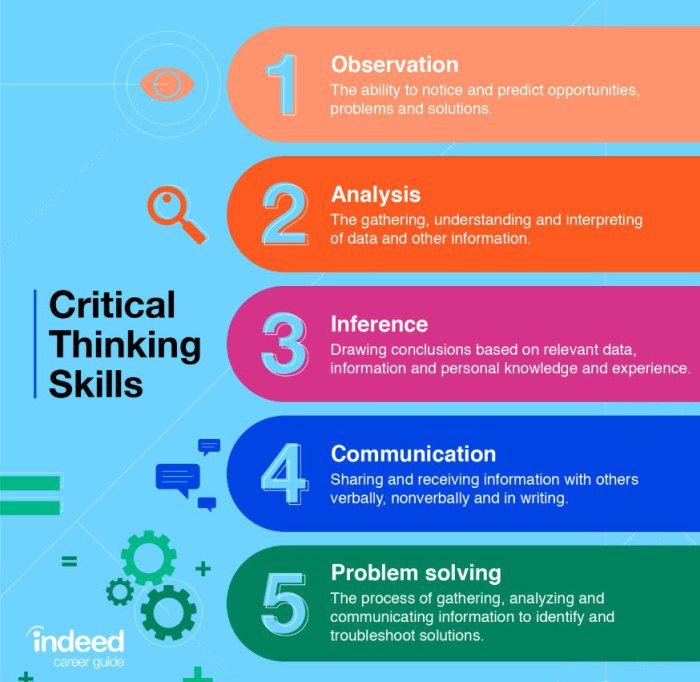
Source: Indeed
Critical thinking is the ability to examine a subject and develop an informed opinion about it. It’s about asking questions, then looking closely at the answers to form conclusions that are backed by provable facts, not just “gut feelings” and opinion. These skills allow us to confidently navigate a world full of persuasive advertisements, opinions presented as facts, and confusing and contradictory information.
The Foundation for Critical Thinking says, “Critical thinking can be seen as having two components: 1) a set of information and belief-generating and processing skills, and 2) the habit, based on intellectual commitment, of using those skills to guide behavior.”
In other words, good critical thinkers know how to analyze and evaluate information, breaking it down to separate fact from opinion. After a thorough analysis, they feel confident forming their own opinions on a subject. And what’s more, critical thinkers use these skills regularly in their daily lives. Rather than jumping to conclusions or being guided by initial reactions, they’ve formed the habit of applying their critical thinking skills to all new information and topics.
Why is critical thinking so important?
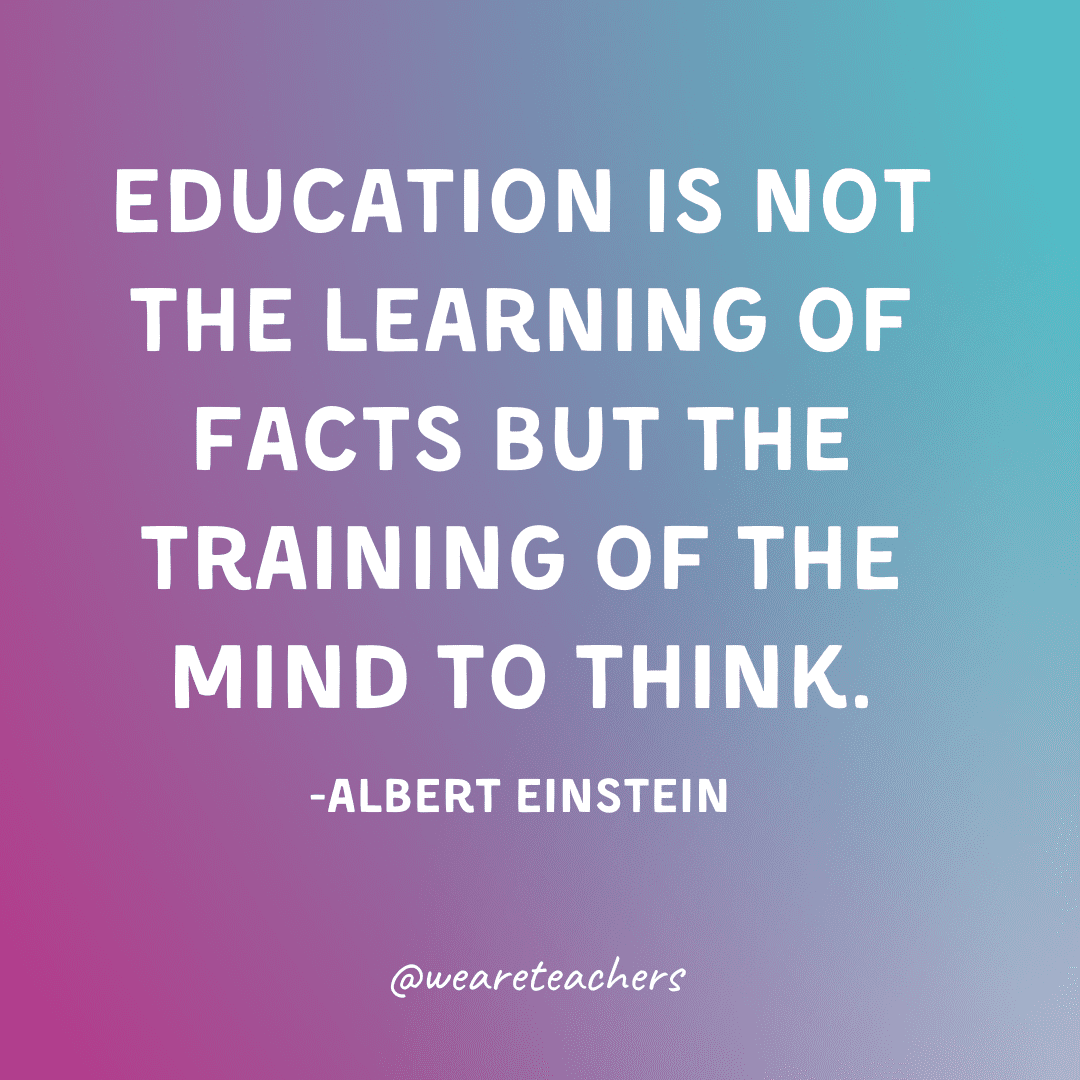
Imagine you’re shopping for a new car. It’s a big purchase, so you want to do your research thoroughly. There’s a lot of information out there, and it’s up to you to sort through it all.
- You’ve seen TV commercials for a couple of car models that look really cool and have features you like, such as good gas mileage. Plus, your favorite celebrity drives that car!
- The manufacturer’s website has a lot of information, like cost, MPG, and other details. It also mentions that this car has been ranked “best in its class.”
- Your neighbor down the street used to have this kind of car, but he tells you that he eventually got rid of it because he didn’t think it was comfortable to drive. Plus, he heard that brand of car isn’t as good as it used to be.
- Three independent organizations have done test-drives and published their findings online. They all agree that the car has good gas mileage and a sleek design. But they each have their own concerns or complaints about the car, including one that found it might not be safe in high winds.
So much information! It’s tempting to just go with your gut and buy the car that looks the coolest (or is the cheapest, or says it has the best gas mileage). Ultimately, though, you know you need to slow down and take your time, or you could wind up making a mistake that costs you thousands of dollars. You need to think critically to make an informed choice.
What does critical thinking look like?
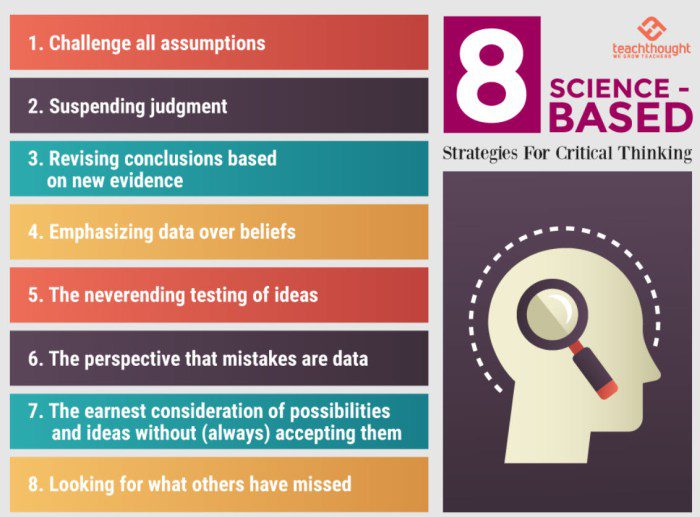
Source: TeachThought
Let’s continue with the car analogy, and apply some critical thinking to the situation.
- Critical thinkers know they can’t trust TV commercials to help them make smart choices, since every single one wants you to think their car is the best option.
- The manufacturer’s website will have some details that are proven facts, but other statements that are hard to prove or clearly just opinions. Which information is factual, and even more important, relevant to your choice?
- A neighbor’s stories are anecdotal, so they may or may not be useful. They’re the opinions and experiences of just one person and might not be representative of a whole. Can you find other people with similar experiences that point to a pattern?
- The independent studies could be trustworthy, although it depends on who conducted them and why. Closer analysis might show that the most positive study was conducted by a company hired by the car manufacturer itself. Who conducted each study, and why?
Did you notice all the questions that started to pop up? That’s what critical thinking is about: asking the right questions, and knowing how to find and evaluate the answers to those questions.
Good critical thinkers do this sort of analysis every day, on all sorts of subjects. They seek out proven facts and trusted sources, weigh the options, and then make a choice and form their own opinions. It’s a process that becomes automatic over time; experienced critical thinkers question everything thoughtfully, with purpose. This helps them feel confident that their informed opinions and choices are the right ones for them.
Key Critical Thinking Skills
There’s no official list, but many people use Bloom’s Taxonomy to help lay out the skills kids should develop as they grow up.

Source: Vanderbilt University
Bloom’s Taxonomy is laid out as a pyramid, with foundational skills at the bottom providing a base for more advanced skills higher up. The lowest phase, “Remember,” doesn’t require much critical thinking. These are skills like memorizing math facts, defining vocabulary words, or knowing the main characters and basic plot points of a story.
Higher skills on Bloom’s list incorporate more critical thinking.
True understanding is more than memorization or reciting facts. It’s the difference between a child reciting by rote “one times four is four, two times four is eight, three times four is twelve,” versus recognizing that multiplication is the same as adding a number to itself a certain number of times. When you understand a concept, you can explain how it works to someone else.
When you apply your knowledge, you take a concept you’ve already mastered and apply it to new situations. For instance, a student learning to read doesn’t need to memorize every word. Instead, they use their skills in sounding out letters to tackle each new word as they come across it.
When we analyze something, we don’t take it at face value. Analysis requires us to find facts that stand up to inquiry. We put aside personal feelings or beliefs, and instead identify and scrutinize primary sources for information. This is a complex skill, one we hone throughout our entire lives.
Evaluating means reflecting on analyzed information, selecting the most relevant and reliable facts to help us make choices or form opinions. True evaluation requires us to put aside our own biases and accept that there may be other valid points of view, even if we don’t necessarily agree with them.
Finally, critical thinkers are ready to create their own result. They can make a choice, form an opinion, cast a vote, write a thesis, debate a topic, and more. And they can do it with the confidence that comes from approaching the topic critically.
How do you teach critical thinking skills?
The best way to create a future generation of critical thinkers is to encourage them to ask lots of questions. Then, show them how to find the answers by choosing reliable primary sources. Require them to justify their opinions with provable facts, and help them identify bias in themselves and others. Try some of these resources to get started.
5 Critical Thinking Skills Every Kid Needs To Learn (And How To Teach Them)
- 100+ Critical Thinking Questions for Students To Ask About Anything
- 10 Tips for Teaching Kids To Be Awesome Critical Thinkers
- Free Critical Thinking Poster, Rubric, and Assessment Ideas
More Critical Thinking Resources
The answer to “What is critical thinking?” is a complex one. These resources can help you dig more deeply into the concept and hone your own skills.
- The Foundation for Critical Thinking
- Cultivating a Critical Thinking Mindset (PDF)
- Asking the Right Questions: A Guide to Critical Thinking (Browne/Keeley, 2014)
Have more questions about what critical thinking is or how to teach it in your classroom? Join the WeAreTeachers HELPLINE group on Facebook to ask for advice and share ideas!
Plus, 12 skills students can work on now to help them in careers later ..
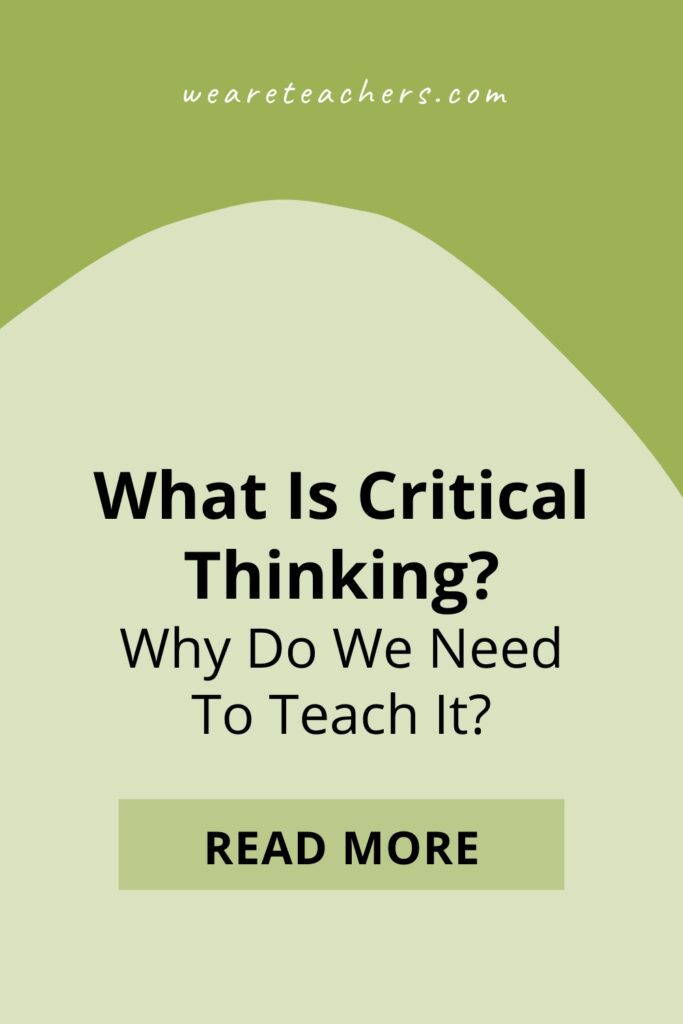
You Might Also Like

Teach them to thoughtfully question the world around them. Continue Reading
Copyright © 2024. All rights reserved. 5335 Gate Parkway, Jacksonville, FL 32256
Constructivism Learning Theory & Philosophy of Education
Saul Mcleod, PhD
Editor-in-Chief for Simply Psychology
BSc (Hons) Psychology, MRes, PhD, University of Manchester
Saul Mcleod, PhD., is a qualified psychology teacher with over 18 years of experience in further and higher education. He has been published in peer-reviewed journals, including the Journal of Clinical Psychology.
Learn about our Editorial Process
Olivia Guy-Evans, MSc
Associate Editor for Simply Psychology
BSc (Hons) Psychology, MSc Psychology of Education
Olivia Guy-Evans is a writer and associate editor for Simply Psychology. She has previously worked in healthcare and educational sectors.
On This Page:
Constructivism is a learning theory that emphasizes the active role of learners in building their own understanding. Rather than passively receiving information, learners reflect on their experiences, create mental representations , and incorporate new knowledge into their schemas . This promotes deeper learning and understanding.
Constructivism is ‘an approach to learning that holds that people actively construct or make their own knowledge and that reality is determined by the experiences of the learner’ (Elliott et al., 2000, p. 256).
In elaborating on constructivists’ ideas, Arends (1998) states that constructivism believes in the personal construction of meaning by the learner through experience and that meaning is influenced by the interaction of prior knowledge and new events.
Constructivism Philosophy
Knowledge is constructed rather than innate, or passively absorbed.
Constructivism’s central idea is that human learning is constructed, that learners build new knowledge upon the foundation of previous learning.
This prior knowledge influences what new or modified knowledge an individual will construct from new learning experiences (Phillips, 1995).
Learning is an active process.
The second notion is that learning is an active rather than a passive process.
The passive view of teaching views the learner as ‘an empty vessel’ to be filled with knowledge, whereas constructivism states that learners construct meaning only through active engagement with the world (such as experiments or real-world problem-solving).
Information may be passively received, but understanding cannot be, for it must come from making meaningful connections between prior knowledge, new knowledge, and the processes involved in learning.
John Dewey valued real-life contexts and problems as an educational experience. He believed that if students only passively perceive a problem and do not experience its consequences in a meaningful, emotional, and reflective way, they are unlikely to adapt and revise their habits or construct new habits, or will only do so superficially.
All knowledge is socially constructed.
Learning is a social activity – it is something we do together, in interaction with each other, rather than an abstract concept (Dewey, 1938).
For example, Vygotsky (1978) believed that community plays a central role in the process of “making meaning.” For Vygotsky, the environment in which children grow up will influence how they think and what they think about.
Thus, all teaching and learning is a matter of sharing and negotiating socially constituted knowledge.
For example, Vygotsky (1978) states cognitive development stems from social interactions from guided learning within the zone of proximal development as children and their partners co-construct knowledge.
All knowledge is personal.
Each individual learner has a distinctive point of view, based on existing knowledge and values.
This means that same lesson, teaching or activity may result in different learning by each pupil, as their subjective interpretations differ.
This principle appears to contradict the view the knowledge is socially constructed.
Fox (2001, p. 30) argues:
- Although individuals have their own personal history of learning, nevertheless they can share in common knowledge, and
- Although education is a social process powerfully influenced by cultural factors, cultures are made up of sub-cultures, even to the point of being composed of sub-cultures of one.
- Cultures and their knowledge base are constantly in a process of change and the knowledge stored by individuals is not a rigid copy of some socially constructed template. In learning a culture, each child changes that culture.
Learning exists in the mind.
The constructivist theory posits that knowledge can only exist within the human mind, and that it does not have to match any real-world reality (Driscoll, 2000).
Learners will be constantly trying to develop their own individual mental model of the real world from their perceptions of that world.
As they perceive each new experience, learners will continually update their own mental models to reflect the new information, and will, therefore, construct their own interpretation of reality.
Types of Constructivism
Typically, this continuum is divided into three broad categories: Cognitive constructivism, based on the work of Jean Piaget ; social constructivism, based on the work of Lev Vygotsky; and radical constructivism.
According to the GSI Teaching and Resource Center (2015, p.5):
Cognitive constructivism states knowledge is something that is actively constructed by learners based on their existing cognitive structures. Therefore, learning is relative to their stage of cognitive development.
Cognitivist teaching methods aim to assist students in assimilating new information to existing knowledge, and enabling them to make the appropriate modifications to their existing intellectual framework to accommodate that information.
According to social constructivism, learning is a collaborative process, and knowledge develops from individuals” interactions with their culture and society.
Social constructivism was developed by Lev Vygotsky (1978, p. 57), who suggested that:
Every function in the child’s cultural development appears twice: first, on the social level and, later on, on the individual level; first, between people (interpsychological) and then inside the child (intrapsychological).
The notion of radical constructivism was developed by Ernst von Glasersfeld (1974) and states that all knowledge is constructed rather than perceived through senses.
Learners construct new knowledge on the foundations of their existing knowledge. However, radical constructivism states that the knowledge individuals create tells us nothing about reality, and only helps us to function in your environment. Thus, knowledge is invented not discovered.
Radical constructivism also argues that there is no way to directly access an objective reality, and that knowledge can only be understood through the individual’s subjective interpretation of their experiences.
This theory asserts that individuals create their own understanding of reality, and that their knowledge is always incomplete and subjective.
The humanly constructed reality is all the time being modified and interacting to fit ontological reality, although it can never give a ‘true picture’ of it. (Ernest, 1994, p. 8)
| Knowledge is created through social interactions and collaboration with others. | Knowledge is constructed through mental processes such as attention, perception, and memory. | Knowledge is constructed by the individual through their subjective experiences and interactions with the world. |
| The learner is an active participant in the construction of knowledge and learning is a social process. | The learner is an active problem-solver who constructs knowledge through mental processes. | The learner is the sole constructor of knowledge and meaning, and their reality is subjective and constantly evolving. |
| The teacher facilitates learning by providing opportunities for social interaction and collaboration. | The teacher provides information and resources for the learner to construct their own understanding. | The teacher encourages the learner to question and reflect on their experiences to construct their own knowledge. |
| Learning is a social process that involves collaboration, negotiation, and reflection. | Learning is an individual process that involves mental processes such as attention, perception, and memory. | Learning is an individual and subjective process that involves constructing meaning from one’s experiences. |
| Reality is socially constructed and subjective, and there is no one objective truth. | Reality is objective and exists independently of the learner, but the learner constructs their own understanding of it. | Reality is subjective and constantly evolving, and there is no one objective truth. |
| For example: Collaborative group work in a classroom setting. | For example: Solving a math problem using mental processes. | For example: Reflecting on personal experiences to construct meaning and understanding. |
Constructivism Teaching Philosophy
Constructivist learning theory underpins a variety of student-centered teaching methods and techniques which contrast with traditional education, whereby knowledge is simply passively transmitted by teachers to students.
What is the role of the teacher in a constructivist classroom?
Constructivism is a way of teaching where instead of just telling students what to believe, teachers encourage them to think for themselves. This means that teachers need to believe that students are capable of thinking and coming up with their own ideas. Unfortunately, not all teachers believe this yet in America.
The primary responsibility of the teacher is to create a collaborative problem-solving environment where students become active participants in their own learning.
From this perspective, a teacher acts as a facilitator of learning rather than an instructor.
The teacher makes sure he/she understands the students” preexisting conceptions, and guides the activity to address them and then build on them (Oliver, 2000).
Scaffolding is a key feature of effective teaching, where the adult continually adjusts the level of his or her help in response to the learner’s level of performance.
In the classroom, scaffolding can include modeling a skill, providing hints or cues, and adapting material or activity (Copple & Bredekamp, 2009).
What are the features of a constructivist classroom?
A constructivist classroom emphasizes active learning, collaboration, viewing a concept or problem from multiple perspectives, reflection, student-centeredness, and authentic assessment to promote meaningful learning and help students construct their own understanding of the world.
Tam (2000) lists the following four basic characteristics of constructivist learning environments, which must be considered when implementing constructivist teaching strategies:
1) Knowledge will be shared between teachers and students. 2) Teachers and students will share authority. 3) The teacher’s role is one of a facilitator or guide. 4) Learning groups will consist of small numbers of heterogeneous students.
| Traditional Classroom | Constructivist Classroom |
|---|---|
| Strict adherence to a fixed curriculum is highly valued. | Pursuit of student questions and interests is valued. |
| Learning is based on repetition. | Learning is interactive, building on what the student already knows. |
| Teacher-centered. | Student-centered. |
| Teachers disseminate information to students; students are recipients of knowledge (passive learning). | Teachers have a dialogue with students, helping students construct their own knowledge (active learning). |
| Teacher’s role is directive, rooted in authority. | Teacher’s role is interactive, rooted in negotiation. |
| Students work primarily alone (competitive). | Students work primarily in groups (cooperative) and learn from each other. |
What are the pedagogical (i.e., teaching) goals of constructivist classrooms?
Honebein (1996) summarizes the seven pedagogical goals of constructivist learning environments:
- To provide experience with the knowledge construction process (students determine how they will learn).
- To provide experience in and appreciation for multiple perspectives (evaluation of alternative solutions).
- To embed learning in realistic contexts (authentic tasks).
- To encourage ownership and a voice in the learning process (student-centered learning).
- To embed learning in social experience (collaboration).
- To encourage the use of multiple modes of representation, (video, audio text, etc.)
- To encourage awareness of the knowledge construction process (reflection, metacognition).
Brooks and Brooks (1993) list twelve descriptors of constructivist teaching behaviors:
- Encourage and accept student autonomy and initiative. (p. 103)
- Use raw data and primary sources, along with manipulative, interactive, and physical materials. (p. 104)
- When framing tasks, use cognitive terminology such as “classify,” analyze,” “predict,” and “create.” (p. 104)
- Allow student responses to drive lessons, shift instructional strategies, and alter content. (p. 105)
- Inquire about students’ understandings of the concepts before sharing [your] own understandings of those concepts. (p. 107)
- Encourage students to engage in dialogue, both with the teacher and with one another. (p. 108)
- Encourage student inquiry by asking thoughtful, open-ended questions and encouraging students to ask questions of each other. (p. 110)
- Seek elaboration of students’ initial responses. (p. 111)
- Engage students in experiences that might engender contradictions to their initial hypotheses and then encourage discussion. (p. 112)
- Allow wait time after posing questions. (p. 114)
- Provide time for students to construct relationships and create metaphors. (p. 115)
- Nurture students’ natural curiosity through frequent use of the learning cycle model. (p. 116)
Critical Evaluation
Constructivism promotes a sense of personal agency as students have ownership of their learning and assessment.
The biggest disadvantage is its lack of structure. Some students require highly structured learning environments to be able to reach their potential.
It also removes grading in the traditional way and instead places more value on students evaluating their own progress, which may lead to students falling behind, as without standardized grading teachers may not know which students are struggling.
Summary Tables
| Behaviourism | Constructivism |
|---|---|
| Emphasizes the role of the environment and external factors in behavior | Emphasizes the role of internal mental processes in learning and knowledge creation |
| Knowledge is gained through external stimuli and observable behaviors | Knowledge is actively constructed by the individual based on their experiences |
| Teachers are the authority figures who impart knowledge to students | Teachers are facilitators who guide students in constructing their own knowledge |
| Students are passive receivers of knowledge and respond to rewards/punishments | Students are active participants in constructing their own understanding and knowledge |
| Observable behavior and measurable outcomes | Internal mental processes, thinking, and reasoning |
| Evaluation is based on observable behavior and measurable outcomes | Evaluation is based on individual understanding and internal mental processes |
| Classical and operant conditioning, behavior modification, reinforcement | Problem-based learning, inquiry-based learning, cognitive apprenticeship |
| Constructivism | Cognitivism |
|---|---|
| Emphasizes the active role of learners in constructing their own understanding | Emphasizes the role of internal mental processes in learning and the acquisition of knowledge |
| Knowledge is actively constructed by the learner based on their experiences | Knowledge is a product of internal mental processes and can be objectively measured and assessed |
| Teachers are facilitators who guide learners in constructing their own knowledge | Teachers are experts who provide knowledge to learners and guide them in developing their cognitive abilities |
| Students are active participants in constructing their own understanding | Students are receivers of knowledge from teachers and use their cognitive abilities to process information |
| Active construction of knowledge based on experiences | Internal mental processes and information processing |
| Evaluation is based on individual understanding and internal mental processes | Evaluation is based on objectively measurable outcomes and mastery of specific knowledge and skills |
| Problem-based learning, inquiry-based learning, cognitive apprenticeship | Information processing theory, schema theory, metacognition |
What is constructivism in the philosophy of education?
Constructivism in the philosophy of education is the belief that learners actively construct their own knowledge and understanding of the world through their experiences, interactions, and reflections.
It emphasizes the importance of learner-centered approaches, hands-on activities, and collaborative learning to facilitate meaningful and authentic learning experiences.
How would a constructivist teacher explain 1/3÷1/3?
They might engage students in hands-on activities, such as using manipulatives or visual representations, to explore the concept visually and tangibly.
The teacher would encourage discussions among students, allowing them to share their ideas and perspectives, and guide them toward discovering the relationship between dividing by a fraction and multiplying by its reciprocal.
Through guided questioning, the teacher would facilitate critical thinking and help students arrive at the understanding that dividing 1/3 by 1/3 is equivalent to multiplying by the reciprocal, resulting in a value of 1.
Arends, R. I. (1998). Resource handbook. Learning to teach (4th ed.). Boston, MA: McGraw-Hill.
Brooks, J., & Brooks, M. (1993). In search of understanding: the case for constructivist classrooms, ASCD. NDT Resource Center database .
Copple, C., & Bredekamp, S. (2009). Developmentally appropriate practice in early childhood programs . Washington, DC: National Association for the Education of Young Children.
Dewey, J. (1938) Experience and Education . New York: Collier Books.
Driscoll, M. (2000). Psychology of Learning for Instruction . Boston: Allyn& Bacon
Elliott, S.N., Kratochwill, T.R., Littlefield Cook, J. & Travers, J. (2000). Educational psychology: Effective teaching, effective learning (3rd ed.) . Boston, MA: McGraw-Hill College.
Ernest, P. (1994). Varieties of constructivism: Their metaphors, epistemologies and pedagogical implications. Hiroshima Journal of Mathematics Education, 2 (1994), 2.
Fox, R. (2001). Constructivism examined . Oxford review of education, 27(1) , 23-35.
Honebein, P. C. (1996). Seven goals for the design of constructivist learning environments. Constructivist learning environments : Case studies in instructional design, 11-24.
Oliver, K. M. (2000). Methods for developing constructivism learning on the web. Educational Technology, 40 (6)
Phillips, D. C. (1995). The good, the bad, and the ugly: The many faces of constructivism . Educational researcher, 24 (7), 5-12.
Tam, M. (2000). Constructivism, Instructional Design, and Technology: Implications for Transforming Distance Learning. Educational Technology and Society, 3 (2).
Teaching Guide for GSIs. Learning: Theory and Research (2016). Retrieved from http://gsi.berkeley.edu/media/Learning.pdf
von Glasersfeld, E. V. (1974). Piaget and the radical constructivist epistemology . Epistemology and education , 1-24.
von Glasersfeld, E. (1994). A radical constructivist view of basic mathematical concepts. Constructing mathematical knowledge: Epistemology and mathematics education, 5-7.
Von Glasersfeld, E. (2013). Radical constructivism (Vol. 6). Routledge.
Vygotsky, L. S. (1978). Mind in society: The development of higher psychological processes . Cambridge, MA: Harvard University Press.
Further Reading
Constructivist Teaching Methods
Constructivism Learning Theory: A Paradigm for Teaching and Learning Strategies Which Can be Implemented by Teachers When Planning Constructivist Opportunities in the Classroom
Related Articles

Child Psychology
Vygotsky vs. Piaget: A Paradigm Shift

Interactional Synchrony

Internal Working Models of Attachment

Learning Theory of Attachment

Stages of Attachment Identified by John Bowlby And Schaffer & Emerson (1964)

Child Psychology , Personality
How Anxious Ambivalent Attachment Develops in Children
- Critical Thinking
Thinking Like a Social Worker: Examining the Meaning of Critical Thinking in Social Work
- Journal of Social Work Education 51(3):457-474
- 51(3):457-474

- Florida State University

Abstract and Figures

Discover the world's research
- 25+ million members
- 160+ million publication pages
- 2.3+ billion citations

- Michelle D. DiLauro
- D Rheinheimer
- CHILD FAM SOC WORK

- Magdalena Troncoso del Río

- Elda Savoie

- Jane Maidment
- Pamela Stowers Johansen
- Tina U. Hancock
- Etty Vandsburger
- Hugh G. Clark
- Robert C. Kersting
- Ann Marie Mumm

- RES SOCIAL WORK PRAC
- Marie Thielke Huff

- Karl R. Popper
- Recruit researchers
- Join for free
- Login Email Tip: Most researchers use their institutional email address as their ResearchGate login Password Forgot password? Keep me logged in Log in or Continue with Google Welcome back! Please log in. Email · Hint Tip: Most researchers use their institutional email address as their ResearchGate login Password Forgot password? Keep me logged in Log in or Continue with Google No account? Sign up
Need to start saving with a new ATS? Learn how to calculate the return on investment of your ATS Calculate ROI now
- HR Toolkit |
- Definitions |
What are soft skills?
Soft skills are general traits not specific to any job, helping employees excel in any workplace. They include communication, teamwork, and adaptability, often termed as transferable or interpersonal skills. They’re essential for professional success.

An experienced recruiter and HR professional who has transferred her expertise to insightful content to support others in HR.
At a minimum, employees need role-specific knowledge and abilities to perform their job duties. But, those who usually stand out as high performers need some additional qualities, such as the ability to communicate clearly, the ability to work well with others and the ability to manage their time effectively. These abilities are examples of soft skills.
Neil Carberry , Director for Employment and Skills at CBI , talks about the balance between attitude and technical skills: “Business is clear that developing the right attitudes and attributes in people – such as resilience, respect, enthusiasm, and creativity – is just as important as academic or technical skills. In an ever more competitive jobs market it is such qualities that will give our young talent a head start and also allow existing employees to progress to higher skilled, better-paid roles”.
According to research conducted by Harvard University, 85% of job success comes from having well-developed soft and people skills , with only 15% attributed to technical skills. This underlines the substantial impact soft skills have on professional success.
In addition, Deloitte’s research indicates that jobs requiring intensive soft skills are expected to grow 2.5 times faster than other job types. By 2030, it is predicted that 63% of all jobs will be comprised of soft skills roles, showcasing the growing demand for these competencies in the labor market.
Get our new HRIS Buyer's Guide
Learn what an HRIS is, what features to look for, and how it can help you so you can make the right decision in getting this crucial HR software.
Download your guide now
- 15 soft skills examples that are essential traits among employees
Why are soft skills important?
How do you assess soft skills in candidates, here are 15 soft skills examples that are essential traits among employees:.
- Communication
- Problem-solving
- Time management
- Critical thinking
- Decision-making
- Organizational
- Stress management
- Adaptability
- Conflict management
- Resourcefulness
- Openness to criticism
Forbes adds to the above Emotional Intelligence and Work Ethic, which are as important as the others mentioned.
Move the right people forward faster
Easily collaborate with hiring teams to evaluate applicants, gather fair and consistent feedback, check for unconscious bias, and decide who’s the best fit, all in one system.
Start evaluating candidates
In job ads, it’s common to include requirements such as “communication skills” or “a problem-solving attitude”. That’s because soft skills help you:
- Example: An employee with good time management skills knows how to prioritize tasks to meet deadlines.
- Example: When two candidates have a similar academic and professional background, you’re more likely to hire the one who’s more collaborative and flexible.
- Example: For a junior position, it makes sense to look for candidates with a “willingness to learn” and an “adaptive personality”, as opposed to hiring an expert.
- Example: When hiring a salesperson, you want to find a candidate who’s familiar with the industry and has experience in sales, but is also resilient, knows how to negotiate and has excellent verbal communication abilities.
- Example: If you value accountability and you want to have employees who can take initiative, it’s important to look for candidates who are not afraid to take ownership of their job, who are decisive and have a problem-solving aptitude.
How to evaluate soft skills in the workplace
Identifying and assessing soft skills in candidates is no easy feat: those qualities are often intangible and can’t be measured by simply looking at what soft skills each candidate includes in their resume. Besides, candidates will try to present themselves as positively as possible during interviews, so it’s your job to dig deeper to uncover what they can really bring to the table in terms of soft skills.
1. Know what you’re looking for in potential hires beforehand and ask all candidates the same questions.
Before starting your interview process for an open role, consider what kind of soft skills are important in this role and prepare specific questions to assess those skills. This step is important for you to evaluate all candidates objectively. For example, in a sales role, good communication is key. By preparing specific questions that evaluate how candidates use their communication skills on the job, you’re more likely to find someone who can actually communicate with clients effectively, instead of hiring someone who only appears so (e.g. because they’re extroverted).
To help you out, we gathered examples of soft skills questions that test specific skills:
- Adaptability interview questions
- Analytical interview questions
- Change management interview questions
- Communication interview questions
- Critical-thinking interview questions
- Decision-making interview questions
- Leadership interview questions
- Presentation interview questions
- Problem-solving interview questions
- Team player interview questions
2. Ask behavioral questions to learn how they’ve used soft skills in previous jobs.
Past behaviors indicate how candidates behave in business settings, so they can be used as a soft skill assessment, too. For example, you can ask targeted questions to learn how candidates have resolved conflicts, how they’ve managed time-sensitive tasks or how they’ve worked in group projects.
Here are some ideas:
- How do you prioritize work when there are multiple projects going on at the same time?
- What happened when you disagreed with a colleague about how you should approach a project or deal with a problem at work?
Check our list of behavioral interview questions for more examples.
3. Use hypothetical scenarios, games and activities that test specific abilities.
Often, it’s useful to simulate job duties to test how candidates would approach regular tasks and challenges. That’s because each job, team and company is different, so you want to find a candidate who fits your unique environment. For example, a role-playing activity can help you assess whether salespeople have the negotiation skills you’re specifically looking for. Or, you can use a game-based exercise to identify candidates who solve problems creatively.
Here are some examples:
- If you had two important deadlines coming up, how would you prioritize your tasks?
- If one of your team members was underperforming, how would you give them feedback?
For more ideas on using hypothetical scenarios to evaluate candidates, take a look at our situational interview questions .
4. Pay attention to candidates’ answers and reactions during interviews
You can learn a lot about candidates’ soft skills through job-specific questions and assignments. Even if you want to primarily test candidates’ knowledge and hard skills, you can still notice strong and weak points in soft skills, too. For example, one candidate might claim to have excellent attention to detail, but if their written assignment has many typos and errors, then that’s a red flag. Likewise, when a candidate gives you clear, well-structured answers, it’s a hint they’re good communicators.
To form an objective opinion on candidates’ soft skills and abilities, make sure you take everything into consideration: from the way they interact with you during interviews to their performance on job-related tasks. This way, you’ll be more confident you select the most competent employees, but also those who fit well to your work environment.
Want more definitions? See our complete library of HR Terms .
Frequently asked questions
Get our hris buyer’s guide.
What's an HRIS? What do I need to know in order to get one? How can it help my business? If you've asked yourself these questions, our new HRIS Buyer's Guide is for you.
Let's grow together
Explore our full platform with a 15-day free trial. Post jobs, get candidates and onboard employees all in one place.

6 Fun Morning Work and Bell Ringer Ideas

The first five minutes of class can set the tone for an entire lesson. So what can you do to capture your students’ attention and get them ready to learn right away? This is where fun morning work and bell ringer activities come in handy.
These start-of-class activities go by many different names — morning bell work, do nows, and warm ups, to name a few. No matter what you call them, they all serve a similar purpose: to get your students’ minds moving the moment they walk through your door.
If you need a little morning and bell work inspiration, check out these ideas and resources from fellow educators like you.
Morning Work and Bell Work Activities for Elementary, Middle School, and High School
1. creative and critical thinking questions.
Jump start your students’ creativity and critical thinking with bell ringer questions and prompts that get them thinking outside the box. For example, have students reflect on a provocative quote, ask them to brainstorm solutions to a problem, or prompt them to invent a new technology. By kick starting class with higher-order thinking, your students will be ready to take on any learning challenge.
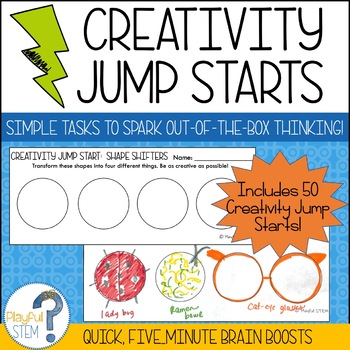
Creativity Jump Starts: STEM Bell Ringers for Out of the Box Thinking!
By Playful Stem
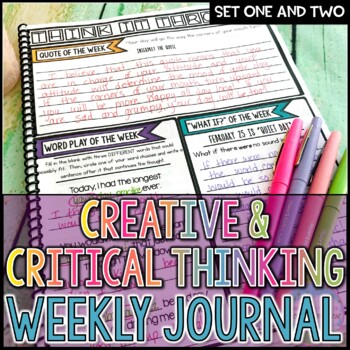
Morning Work Journal or Bell Ringers
By Teaching With a Mountain View
2. Social emotional learning prompts and journals
Teaching social-emotional learning (SEL) is critical to student success, but it can be difficult to find time for it during the busy school day. So why not take advantage of those first few moments of class to support it? Help students prepare their minds and bodies for learning by assigning a daily check-in or SEL activity as morning work or bell ringers.

Daily Social Emotional Learning Warm Up Journal
By Allie Szczecinski with Miss Behavior
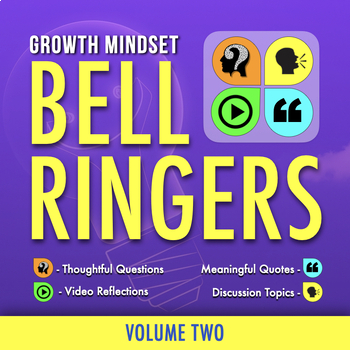
Growth Mindset Bell Ringers | 40 SEL Writing Prompts For Any Subject | Volume 2
By Mister Harms
Not Grade Specific
3. Morning tubs and hands-on activities
Who says morning work has to be pencil and paper? Try something hands on, such as morning tubs, to get students engaged in learning right away. Morning tubs are bins that are pre-filled with an activity and various hands-on materials, such as manipulatives, puzzles, spinners, dice, or dominoes. For younger students, they can be a great opportunity to develop those fine motor skills.

INSTANT VOCABULARY Tubs N Trays MORNING WORK, CENTERS, FINE MOTOR
By Tara West – Little Minds at Work
Grades PreK-K

4th Grade Morning Tubs Work Bin Hands-on Activities Fall, Winter, Spring, Summer
By Cynthia Vautrot – My Kind of Teaching
4. Brain teasers and logic puzzles
Encourage your students to put on their thinking caps during morning work or bell work with brain teasers and logic puzzles! Share a riddle, rebus puzzle, or logic game as a fun way for students to put their minds to work. You could even add a collaborative element by having your students think through the puzzles in partners or groups.
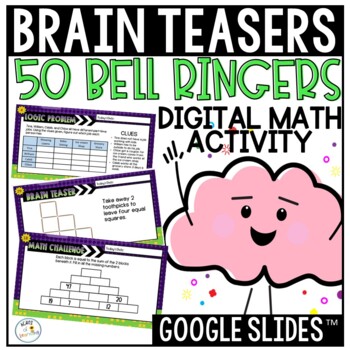
Brain Teaser Bell Ringers | Digital Math Morning Work | Logic Puzzles
By Acres of Learning
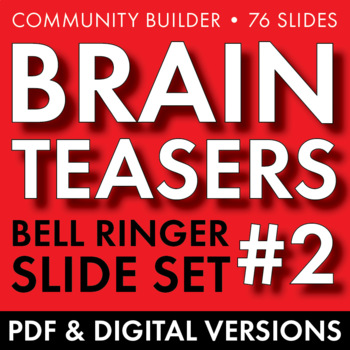
BRAIN TEASERS VOL. 2 – Logic, Word Sense, Puzzles, Lateral Thinking – Fun Stuff
By Laura Randazzo
Grades 8-11
5. Article of the day or week
Assigning an article of the day or week is a fantastic way to incorporate reading comprehension and relevant content into your morning work or bell ringers. No matter what you teach — social studies, math, music, science — you can bring in thought-provoking articles and passages that build students’ curiosity and comprehension skills.
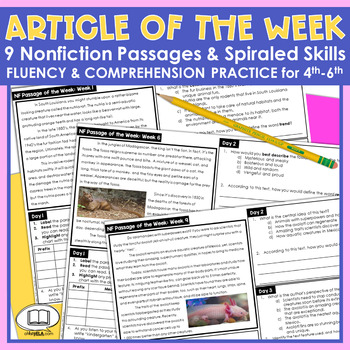
Article of the Week Nonfiction Reading Comprehension Passages Weekly 4th 5th 6th
By Lindsay Flood

Strange Geography Article of the Day-Bellringers-Reading Comprehension Passages
By Think Tank
6. Concept review activities
Last but certainly not least, those first minutes of class are an excellent opportunity to review key concepts and skills with students. Whether you’re reviewing the prior day’s learning or circling back to a previously taught skill, devoting a little time to review every day can help those important concepts sink in. You might even consider differentiating your morning work or bell ringers based on the needs of your individual students.
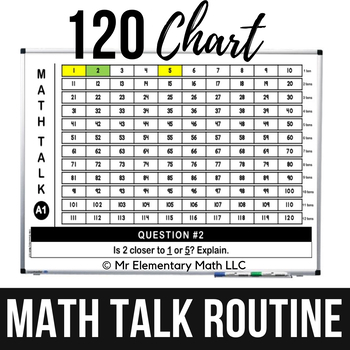
1st Grade Daily Math Warm Up and Morning Work – 120 Chart Review
By Mr Elementary Math

Science Daily Warmups FULL YEAR | Bell ringers | 4th grade & 5th grade
By The Science Penguin
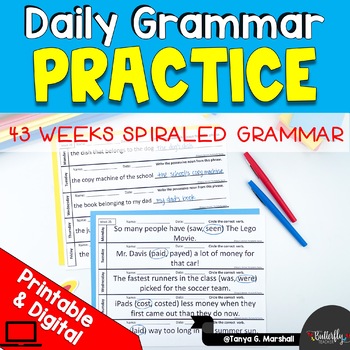
Daily Grammar Practice with Editable Spiraled ELA | Morning Work
By Tanya G Marshall The Butterfly Teacher

MUSIC VOCAB 10 Minute Terms | Music Bellringers | Secondary Music Vocabulary
By Sarah Stockton Resources
Grades 6-12

BACK TO SCHOOL FULL YEAR ALGEBRA 1 WARM UPS Bundle | Bell Ringers | Exit Tickets
By Algebra Accents
Grades 7-10
With these morning and bell work ideas and activities in hand, you’re sure to start your lessons off strong. If you need more inspiration, be sure to check out other morning work and bell ringer resources on TPT.
- Middle School
- High School
- Social Studies
- Social-Emotional Learning
- Back-to-School
- Asian Pacific American Heritage Month
- Autism Acceptance Month
- Black History Month
- Hispanic Heritage Month
- Pride Month
- Indigenous Peoples’ Month
- Women’s History Month
What is STEM Education?
STEM education, now also know as STEAM, is a multi-discipline approach to teaching.

- Importance of STEAM education
STEAM blended learning
- Inequalities in STEAM
Additional resources
Bibliography.
STEM education is a teaching approach that combines science, technology, engineering and math . Its recent successor, STEAM, also incorporates the arts, which have the "ability to expand the limits of STEM education and application," according to Stem Education Guide . STEAM is designed to encourage discussions and problem-solving among students, developing both practical skills and appreciation for collaborations, according to the Institution for Art Integration and STEAM .
Rather than teach the five disciplines as separate and discrete subjects, STEAM integrates them into a cohesive learning paradigm based on real-world applications.
According to the U.S. Department of Education "In an ever-changing, increasingly complex world, it's more important than ever that our nation's youth are prepared to bring knowledge and skills to solve problems, make sense of information, and know how to gather and evaluate evidence to make decisions."
In 2009, the Obama administration announced the " Educate to Innovate " campaign to motivate and inspire students to excel in STEAM subjects. This campaign also addresses the inadequate number of teachers skilled to educate in these subjects.
The Department of Education now offers a number of STEM-based programs , including research programs with a STEAM emphasis, STEAM grant selection programs and general programs that support STEAM education.
In 2020, the U.S. Department of Education awarded $141 million in new grants and $437 million to continue existing STEAM projects a breakdown of grants can be seen in their investment report .
The importance of STEM and STEAM education

STEAM education is crucial to meet the needs of a changing world. According to an article from iD Tech , millions of STEAM jobs remain unfilled in the U.S., therefore efforts to fill this skill gap are of great importance. According to a report from the U.S. Bureau of Labor Statistics there is a projected growth of STEAM-related occupations of 10.5% between 2020 and 2030 compared to 7.5% in non-STEAM-related occupations. The median wage in 2020 was also higher in STEAM occupations ($89,780) compared to non-STEAM occupations ($40,020).
Between 2014 and 2024, employment in computer occupations is projected to increase by 12.5 percent between 2014 and 2024, according to a STEAM occupation report . With projected increases in STEAM-related occupations, there needs to be an equal increase in STEAM education efforts to encourage students into these fields otherwise the skill gap will continue to grow.
STEAM jobs do not all require higher education or even a college degree. Less than half of entry-level STEAM jobs require a bachelor's degree or higher, according to skills gap website Burning Glass Technologies . However, a four-year degree is incredibly helpful with salary — the average advertised starting salary for entry-level STEAM jobs with a bachelor's requirement was 26 percent higher than jobs in the non-STEAM fields.. For every job posting for a bachelor's degree recipient in a non-STEAM field, there were 2.5 entry-level job postings for a bachelor's degree recipient in a STEAM field.
What separates STEAM from traditional science and math education is the blended learning environment and showing students how the scientific method can be applied to everyday life. It teaches students computational thinking and focuses on the real-world applications of problem-solving. As mentioned before, STEAM education begins while students are very young:
Elementary school — STEAM education focuses on the introductory level STEAM courses, as well as awareness of the STEAM fields and occupations. This initial step provides standards-based structured inquiry-based and real-world problem-based learning, connecting all four of the STEAM subjects. The goal is to pique students' interest into them wanting to pursue the courses, not because they have to. There is also an emphasis placed on bridging in-school and out-of-school STEAM learning opportunities.
– Best microscopes for kids
– What is a scientific theory?
– Science experiments for kids
Middle school — At this stage, the courses become more rigorous and challenging. Student awareness of STEAM fields and occupations is still pursued, as well as the academic requirements of such fields. Student exploration of STEAM-related careers begins at this level, particularly for underrepresented populations.
High school — The program of study focuses on the application of the subjects in a challenging and rigorous manner. Courses and pathways are now available in STEAM fields and occupations, as well as preparation for post-secondary education and employment. More emphasis is placed on bridging in-school and out-of-school STEAM opportunities.
Much of the STEAM curriculum is aimed toward attracting underrepresented populations. There is a significant disparity in the female to male ratio when it comes to those employed in STEAM fields, according to Stem Women . Approximately 1 in 4 STEAM graduates is female.

Inequalities in STEAM education
Ethnically, people from Black backgrounds in STEAM education in the UK have poorer degree outcomes and lower rates of academic career progression compared to other ethnic groups, according to a report from The Royal Society . Although the proportion of Black students in STEAM higher education has increased over the last decade, they are leaving STEAM careers at a higher rate compared to other ethnic groups.
"These reports highlight the challenges faced by Black researchers, but we also need to tackle the wider inequalities which exist across our society and prevent talented people from pursuing careers in science." President of the Royal Society, Sir Adrian Smith said.
Asian students typically have the highest level of interest in STEAM. According to the Royal Society report in 2018/19 18.7% of academic staff in STEAM were from ethnic minority groups, of these groups 13.2% were Asian compared to 1.7% who were Black.
If you want to learn more about why STEAM is so important check out this informative article from the University of San Diego . Explore some handy STEAM education teaching resources courtesy of the Resilient Educator . Looking for tips to help get children into STEAM? Forbes has got you covered.
- Lee, Meggan J., et al. ' If you aren't White, Asian or Indian, you aren't an engineer': racial microaggressions in STEM education. " International Journal of STEM Education 7.1 (2020): 1-16.
- STEM Occupations: Past, Present, And Future . Stella Fayer, Alan Lacey, and Audrey Watson. A report. 2017.
- Institution for Art Integration and STEAM What is STEAM education?
- Barone, Ryan, ' The state of STEM education told through 18 stats ', iD Tech.
- U.S. Department of Education , Science, Technology, Engineering, and Math, including Computer Science.
- ' STEM sector must step up and end unacceptable disparities in Black staff ', The Royal Society. A report, March 25, 2021.
- 'Percentages of Women in STEM Statistics' Stemwomen.com
Sign up for the Live Science daily newsletter now
Get the world’s most fascinating discoveries delivered straight to your inbox.
What's the difference between a rock and a mineral?
'Physics itself disappears': How theoretical physicist Thomas Hertog helped Stephen Hawking produce his final, most radical theory of everything
Hundreds of centuries-old coins unearthed in Germany likely belonged to wealthy 17th-century mayor
Most Popular
- 2 Rare fungal STI spotted in US for the 1st time
- 3 James Webb telescope finds carbon at the dawn of the universe, challenging our understanding of when life could have emerged
- 4 Neanderthals and humans interbred 47,000 years ago for nearly 7,000 years, research suggests
- 5 Noise-canceling headphones can use AI to 'lock on' to somebody when they speak and drown out all other noises
- 2 Bornean clouded leopard family filmed in wild for 1st time ever
- 3 What is the 3-body problem, and is it really unsolvable?
- 4 7 potential 'alien megastructures' spotted in our galaxy are not what they seem
Open Access is an initiative that aims to make scientific research freely available to all. To date our community has made over 100 million downloads. It’s based on principles of collaboration, unobstructed discovery, and, most importantly, scientific progression. As PhD students, we found it difficult to access the research we needed, so we decided to create a new Open Access publisher that levels the playing field for scientists across the world. How? By making research easy to access, and puts the academic needs of the researchers before the business interests of publishers.
We are a community of more than 103,000 authors and editors from 3,291 institutions spanning 160 countries, including Nobel Prize winners and some of the world’s most-cited researchers. Publishing on IntechOpen allows authors to earn citations and find new collaborators, meaning more people see your work not only from your own field of study, but from other related fields too.
Brief introduction to this section that descibes Open Access especially from an IntechOpen perspective
Want to get in touch? Contact our London head office or media team here
Our team is growing all the time, so we’re always on the lookout for smart people who want to help us reshape the world of scientific publishing.
Home > Books > Empathy Study
Critical Thinking in Social Work Training
Submitted: 14 July 2019 Reviewed: 04 September 2019 Published: 15 November 2019
DOI: 10.5772/intechopen.89538
Cite this chapter
There are two ways to cite this chapter:
From the Edited Volume
Empathy Study
Edited by Makiko Kondo and Bala Nikku
To purchase hard copies of this book, please contact the representative in India: CBS Publishers & Distributors Pvt. Ltd. www.cbspd.com | [email protected]
Chapter metrics overview
1,302 Chapter Downloads
Impact of this chapter
Total Chapter Downloads on intechopen.com
Total Chapter Views on intechopen.com
It is the look at the that leads us to questioning and the answers guide us to updating and the production of knowledge. There is always, in the debates of social work professionals, the question of the search for an intervention project that gives a new meaning to the profession in order to respond, not only theoretically coherent but also efficiently, to the demands placed upon them. The purpose of this chapter is to highlight the importance of critical thinking in the training of social workers. The research is based on an exploratory study carried out with recently graduated university students, whose results point to the benefits of this soft skill in the ability to analyze, understand interactions, detect inconsistencies, systematic problem-solving, reflect on beliefs and values, and reintegrate information as a whole.
- critical thinking
- social work
- soft skills
Author Information
Helena belchior-rocha *.
- Centre for Research and Studies in Sociology (CIES-IUL), Instituto Universitário de Lisboa (ISCTE-IUL), Lisbon, Portugal
Inês Casquilho-Martins
*Address all correspondence to: [email protected]
1. Introduction
The development of skills in critical thinking by students of higher education is nowadays, faced by the challenges of society and the job market place, essential for professional and personal success. This theme has been the subject of increasing reflection and encouragement by different national and international bodies and entities, such as A3ES, 1 the European Commission, OECD, the World Economic Forum, etc. However, despite the interest expressed, there is still a long way for critical thinking to be a generalized priority in the pedagogical practices of teachers, promoted in an intentional, systematic, and transversal way to any area of knowledge.
Thinking about it, in 2009, the Soft Skills Lab (SSL) with the intention of giving students the possibility of complementing their curriculum with soft skills, among which is critical thinking, was created in our university. 2 Being both teachers in social work and critical thinking at the LCT, we decided to carry out this exploratory study to understand the impact of this curricular unit on newly graduated students.
A partial and non-critical view can compromise the performance of any professional, and it is no different with social workers. Common sense concepts are so embedded in our society that even social work students, most of the time, at the beginning of the graduation have a completely wrong idea about what the profession is. The knowledge provided by common sense lead people to believe that the social worker is a kind of a good Samaritan, and this is only one of the challenges students are going to face.
Over time, reality is altered and new conceptions are incorporated into the way of living, learning, acting, interacting, and thinking. The new resources that are constantly added to the already existing ones have or should have the purpose of better serving the individual and society in general. Dealing with the new and complex situations of the contemporary world requires more and more expertise in ways of thinking and acting and relating. Faced with this reality of constant transformations, how can we find autonomy to decide on what is relevant, important, pertinent, and ethical? Critical thinking fits into this question, when it serves as a filter to select what should be harnessed or discarded in this actual avalanche of instantaneous information.
Reflective analysis on the theoretical foundations and intervention models allows social workers to re-equate the directionality of professional action in the context of critical thinking that frames objectivity and questions the reality where it is intervened, as well as the meaning of this intervention in its micro, meso, and macro levels from local to global and from global to local, an exercise that social works constantly need.
As Granja says:
Knowing in Social Work means understanding the social problems as total social phenomena that arise from the operation of the structures and social relations, without denying the particularity of the individual processes and act with a mission to prevent and repair the structural inefficiencies that prevent the poorest from accessing indispensable resources for building themselves as full citizens [ 1 ].
Knowledge about the transformation of social reality requires an investment that results from a reflexive activity involving professionals, in a link between theoretical knowledge and practice, through an interdisciplinary approach that requires a theoretical synthesis built with other areas of social sciences, namely psychology, sociology, anthropology and economics, law, public and social policies, among others, which aims to “change the systems of opportunities, promote social relations dynamics and overcoming the deficit of civic participation” [ 1 ].
Social work practice focuses on social problems, that is, lack of income, unemployment, isolation and breakdown of social ties, domestic violence, children and young people at risk, school drop-out and failure, and migrants and refugees, among many others which by their complexity require a multidimensional combination of vulnerability and the articulation with structural phenomena and current social policies.
It is better evident for all the importance that critical thinking has in the education of future professionals, although it is nothing new, given the fact that is always in the debates of social work professionals the question of the search for an intervention project that gives a new meaning to the profession in order to respond, not only theoretically coherent but also efficiently, to the demands placed.
Social work as a profession has always demanded critical abilities and qualities from its practitioners because decisions have to be made “on the spot” and under pressure. With practice situations being so complex, the consequences of any decisions and action are extremely important [ 2 ].
A reflexive practice leads to thinking through the mediation of concepts and allows to reconstruct the problems and to construct new ways of solving problems. The ability to select data and identify patterns in the professional activity in order to be recognized and transmissible to become sources of knowledge and to be prepare for lifelong learning. For the development of this reflection, it is necessary to have a structured thought about the phenomena that allow analyzing and constructing operational representations.
This requirement goes beyond “competent practice” and demands “critical practice” [ 3 ], and the development of “critical being,” that is, a person who not only reflects critically on knowledge but also develops their powers of critical self-reflection and critical action [ 4 ].
In the research that Ford et al. [ 5 , 6 ] made on criticality with students in social work education, these ideas have been explored and they conclude that the intellectual resources for critical thinking are: (1) background knowledge; (2) critical concepts; (3) critical thinking standards; (4) strategies; and (5) habits of mind. This allows us to realize that this process has to be permanent and rooted as a mindset.
The more we know about a situation and the circumstances that caused it, the better we can articulate with a structural question, be it social, economic, cultural, or political, including beliefs, values in order to clarify the range of available options and solutions, so that the professional can make an informed decision about the problems that are dealing with.
Beginning to deal with this type of “how to” knowledge is where a practitioner’s ignorance becomes obvious and can cause anxiety. It may well be the reason why many new qualified workers take a very prescriptive, rule-based approach to try to ensure they do not do anything wrong. In many ways such a focus on detail and correctness ensures that practitioners can be more critically aware of what they are doing than experienced workers who have established routines [ 2 ].
Gray et al. add that “Social workers need to examine closely the strengths and limitations of research evidence. Regardless of how strong the evidence for a particular intervention might be, social workers are in a position where they must critically reflect on their work in the political, social, organizational, and interpersonal contexts, make professional judgements, engage in debate with decision-makers about resource allocation, negotiate appropriate practices and, when necessary, argue convincingly for the effectiveness of the work that is done. This requires skills in formulating and presenting well-supported arguments and the interpersonal and written communication skills to convey a position convincingly” [ 7 ].
Based on these assumptions, we did a review of the literature and developed an exploratory study with the aim of understanding the perception of recent students in social work about the importance of critical thinking.
2. The importance of critical thinking in education
According to the literature, the importance of critical thinking skills is recognized in the academic and professional contexts, in which the need to implement measures that facilitate their development and awareness of their usefulness is mentioned.
We find several approaches to critical thinking, some more vague, others more objective, but we cannot easily find a consensus between them, either in terms of definition, in terms of the terminology used, or in the type of methodology designed to develop it [ 8 , 9 ].
The scientific areas in which we can find greater literary production and investigation around critical thinking are philosophy, psychology, and education [ 10 , 11 , 12 ].
We find different contributions from the disciplinary areas mentioned above in an attempt to define critical thinking, and there are no definitions that fit exclusively in one or another area, since many of these authors cross the areas in terms of the research they develop. It is not our goal to find the best definition of critical thinking, or even the most complete one. The various theories focus on different aspects, put the focus on different circumstances, conceptualized in a way that is not always consensual and sometimes even antagonistic. Despite the differences, we find, in these definitions, points of convergence that we think allow us to have a perception about what critical thinking might actually be [ 10 , 13 ].
An argument goes from the premises to the conclusion and is one in which there are good reasons for the assumptions to be true, and in addition, the premises have good reasons to support or support the conclusion.
It is focused initially on the holistic assessment of a situation, not explicit reasoning and analysis. In other words, they establish the inductive or deductive links necessary to bring the different parts of a situation into a meaningful whole, to allow it to make sense. Every situation one experiences and faces may be different, but it is imperative to know enough of the parties to make general sense of the whole in order to start dealing with it.
The foundation for critical thinking defines critical thinking as:
the type of thinking—about any subject, content, or problem—in which the thinker improves the quality of his thinking by competently analyzing, evaluating and reconstructing it. Critical thinking is self-directed, self-disciplined, self-monitored, and self-corrective. It presupposes consent to rigorous standards of excellence and a conscious control of its use. It implies effective communication and problem-solving skills, as well as a commitment to surpass our natural egocentrism and sociocentrism [ 14 ].
According to the Delphi Report, referenced by Facione, in addition to the skills associated with critical thinking, there are still a set of aptitudes, divided into two approaches: one related to life skills in general, and another related to specific issues, doubts, and problems. Regarding the first, the Delphi Report describes the following as critical thinker’s skills: (1) curiosity over a wide variety of issues; (2) concern about becoming and staying well informed; (3) alert to opportunities to use critical thinking; (4) trust in the rational research process; (5) confidence in your own reasoning abilities; (6) open mind regarding divergent views about the world; (7) flexibility when considering alternatives and opinions; (8) understanding of the opinions of others; (9) honesty in the evaluation of reasoning; (10) honesty when confronted by our own egocentric and sociocentric prejudices, stereotypes, and tendencies; (11) caution in the suspension, elaboration or alteration of judgments; and (12) predisposition to reconsider and revise viewpoints, where honest reflection suggests change is necessary [ 15 , 16 ].
Regarding the approach related to specific issues, the Delphi Report refers the following as aptitudes: (1) clarity in affirming an issue or concern; (2) method in dealing with complexity; (3) diligence in searching for relevant information; (4) reasonability in the selection and application of criteria; (5) concern to focus attention on the subject; (6) persistence despite any difficulties that may arise; and (7) accuracy to the level allowed by subject and circumstance.
Critical thinking is multidimensional, encompassing the intellectual (logic, rationality), psychological (self-consciousness, empathy), sociological (in terms of socio-historical context), ethics (norms and moral evaluation), and philosophical (meaning of nature and human life) [ 17 ].
It is also due to its characteristics of transversatility and multidimensionality that the authors argue that critical thinking has for centuries been the basis for the creation and maintenance of a democratic and democratically participative society, qualified by an active, pluralistic, and autonomous citizenship [ 18 , 19 , 20 , 21 , 22 ].
In education, we highlight pioneering authors who have emphasized critical thinking (although with other terminologies), from the Greek philosopher Socrates and the concepts of “knowledge” and “maièutica,” to the American philosopher, psychologist, and educator John Dewey, and reflection on “thinking” and “reflecting” [ 23 , 24 ].
Dewey is even considered the “father” of the modern tradition of critical thinking [ 25 ] when, in the early twentieth century, he advocated the need for education to prepare students for the complex demands of citizenship and the world of work [ 26 ].
The debate about the operationalization of critical thinking, the development and teaching of critical thinking, the skills of critical thinking, and the evaluation of critical thinking, are thus essential topics in education from the last decades of the twentieth century until now, specifically for social work, a recent study in this area recommends a future research agenda for critical thinking [ 27 ]. As competence, or set of competencies, critical thinking can be developed and evaluated. In this sense, the exploratory study presented here intends to contribute to the evaluation of the importance that students attribute to critical thinking, as well as to the evaluation of critical thinking as competence.
2.1 Social work education and critical thinking
The twentieth century imposes on contemporary social work the challenge of establishing theoretical categories and methodologies that broaden its interdisciplinary horizon and stimulate the conception of the human being as a builder of its own reality [ 28 ]. The increasing complexity leads us to the search for alternatives, skills, and a competence to manage the theoretical-practical process, related to the attempt to understand the reality in constant movement, the tendencies and the possibilities that are put to our daily lives.
Social work education in Portugal according to Branco [ 29 ] “focuses on the dynamics of break and continuity between its pivotal socio-political periods and international influences” the same author in its latest article marks these periods saying that:
The social work education itinerary in Portugal during the period between the Republican Regime foundations (1910), the constitution of Estado Novo (1933–1945), the succession of Salazar (1968), the revolutionary crises associated with the Carnation Revolution of 1974 and the academisation period (1989 to the present) [ 29 ].
Questions related to the production of knowledge and the dissemination of this same knowledge arise later (also for socio-historical reasons), with the affirmation of the profession as a specific area of knowledge. In Portugal, with the development of the academic career in the area of social work, (undergraduate, master, and doctorate), the theoretical and practical dimensions, namely training, intervention, and research, have been developing and, consequently, we have assisted to a greater theoretical production (in the form of theses, dissertations, articles, and books) and an intensification of the research effort and its dissemination, which has given to Portuguese social work a greater visibility among the scientific community [ 30 ].
Consequently, the construction of knowledge was imposed as a means of awareness of the subjects involved in the teaching-learning process, in a critical perspective of knowledge as a tool for the realization of the political-professional ethical project and for the transformation of the socio-institutional and political- cultural reality. This awareness has undoubtedly been one of the means for advancing professional maturity.
The experience of this critical thinking course comes from the university, where the study was done through the creation in 2009 of a Cross Skills Laboratory to give students extra skills with the aim of developing a reflexive practice that, rather than aiming at the constitution of a stabilized knowledge, intends to develop the capacities of reflexivity and action; understand the importance of critical thinking in academic and professional context; identify the elements and analyze simple and complex arguments; recognize errors on daily speech; assess the quality of arguments and argumentative texts; and create simple and complex arguments in oral debates and written texts. The students that successfully complete this curriculum unit will be able to analyze arguments regarding their structure and content; argue on an issue; identify the deductive validity on propositions; and question arguments, identifying its weaknesses.
According to Jones “Critical thinking can lead us to open up self-doubt and this is a good thing because it lead us to really examine why we think and act as we do” [ 31 ] and “Developing an ability to understand why you react and think as you do is part of a recognition of you own inner resources” [ 31 ] this author also argues that:
To be able to think about how we, and others, think—thinking about thinking. In doing this you will be thinking about the reasoning, motives and arguments of others. You will have the ability to see all sides of the question and analyze its strengths and weak-in these [ 31 ].
And is corroborated by other authors that alert us by saying that
The technical rationality model also fails to recognize how understanding is developed from the integration of theory and practice (…) Reflective learning incorporates both theoretical and practical themes and issues and seeks to integrate these—to open a dialogue between theory and practice [ 32 ].
It is a continuous process of reflection and allows the interveners to develop their theory directly from their experience. In addition, it allows you to “tailor” your intervention to each specific context using a range of non-defined skills and perspectives.
3. Methodology
The present study is exploratory and quantitative and aims to understand the perception of recent graduate students in social work on the importance of learning critical thinking in higher education and its impact on the labor market.
It aims to identify the potential of learning critical thinking during its formation, including future usefulness in the professional field. Although we do not intend to prove hypotheses, we seek to explore the results based not only on the perception of the respondents, but also to categorize the critical-thinking skills acquired as potentialities in teaching in social work and as knowledge of support to the professional exercise.
In a universe of 154 newly graduated students between 2015 and 2017, whose training integrated the curricular unit of critical thinking in their curriculum, we used an intentional sample of 79 individuals recently graduated in social work.
A bibliographical review was made on the subject and we used as a data collection technician, a questionnaire in which we used a Likert scale of level 5. The Likert scales [ 33 ] are widely used to measure postures and opinions with a higher level of a question of “yes” or “no,” in this questionnaire was composed of a set of sentences (items) in relation to each one of which the respondents were asked to express the degree of agreement from the non-positive (level 1), until very positive (level 5). We also added two questions to understand the degree of satisfaction with the critical thinking training with a scale from 0 to 10, in which 0 was totally dissatisfied and 10 totally satisfied and an open question to perceive the benefits and disadvantages of learning critical thinking.
The questionnaire was divided into two parts: socio-demographic characterization and the identification of the importance of critical thinking contribution as training in its learning.
The age of the participants is between 21 and 45 years, with an average of 24.5 years, mostly females, 87.3, 91.1% Portuguese and 78.5% is inserted in the job market (as social workers) and 94.4% attended this curricular unit in the first year of the degree.
Ability to analyze
Systematic problem solving
Understand interactions and detect inconsistencies
Reflection on beliefs and values
The reintegration of information as a whole
We are aware that one of the limitations of this study is that there is no credit for its generalization [ 34 ] given the fact that it has a small sample (although representative in terms of results for our university) and is exploratory.
Another limitation is that the respondents themselves may have given skewed responses because they know the purpose of the study, they may want to appreciate the university that formed them and give answers that they consider “correct.” It was attempted to overcome this limitation by saying that both the institution and the participants would be anonymous.
We intend to continue this study in a first phase at national level with partnerships with other universities and later extend to a study in the Iberian Peninsula (Portugal-Spain).
The results show that the majority of respondents considered that the contents seized in their critical thinking training were positive or very positive with Likert scores (1–5) between 4.53 and 3.89. The average of responses in the different categories considered the impact of the contents acquired positive 50.55% and very positive 35.27%, understanding this competence as an active element of learning as students, stimulating a clear, logical, and organized thinking, helping to develop the necessary skills during the frequency of higher education and currently in the labor market ( Figure 1 ).

Distribution of respondents’ answers on the current impacts of content acquired during their training.
According to the results, the greatest impact of learning was reflected in the development of strategies for decision-making and in the capacity to train a rigorous analytical view, both with a mean score in the answers of 4.53 (Likert scale-Ls). These figures translate into the impacts of these two categories, which were considered positive by 36.71% of the respondents and very positive by 58.23%. It is also noted that 5.06% of the respondents consider neither positive nor negative.
The identification of the barriers to critical thinking obtained the highest percentage of answers with the classification of positives (67.09%) along with the diagnosis in problem solving (63.29%). In the categories of preparation for problem solving and articulation of daily information, there was a balanced preference for responses, mainly considering positive or very positive.
Respondents answered that the impact on the preparation for problem solving was both very positive (44.30%) and positive (44.30%), considering neither positive or negative 10.13% nor negative 1.27%. In the articulation of information with the everyday situations, 46.84% was very positive, 44.30 positive, and 8.86 neither positive nor negative.
Regarding the ability to identify argumentation errors, 25.32% of the respondents answered that the impacts were neither positive nor negative. This is the category in which neutrality assumes greater expression, although it continues to be less than the responses that consider the very positive (37.97%) and positive (36.71%).
As for the less-valued aspects, but still with an average that considers these competences as positive, are the dimensions of acquisition of learning strategies through reading (3.89 Ls) and acquisition of learning strategies through listening (3.99 Ls). The responses in these two categories vary in their distribution, and the acquisition of learning strategies through reading 32.91% of the respondents considered that the impact of this competence was neither positive nor negative, while 45.57% considered that it was positive and 21.52% which was very positive.
Regarding the acquisition of learning strategies through listening 20.25% considered that was very positive, 59.49% positive, 18.99% that was neither positive nor negative, and 1.27 responded that the impact was negative.
In the acquisition of research techniques and information systematization, most of the answers were positive 55.23%, positive for 22.78% of the respondents, and 16.46% neither positive nor negative. This competence was the one with a residual value, presented the highest percentage of responses that considered the negative impact (2.53%).
The comprehension of the structure of an argumentative text and the acquisition of competences for an argumentative discourse were both considered 55 by 0.70% of the respondents as having a positive impact. The understanding of the structure of an argumentative text also registered 34.18% of responses that indicate a very positive impact and 10.13% that consider that the impact was neither positive nor negative.
In the acquisition of competences for a care argumentative discourse 33.91% considered to have had a very positive impact and 11.39% did not have a positive or negative impact. The ability to develop abstract reasoning was for 26.58% of the respondents considered very positive, 53.16% positive, and 20.25% neither negative nor positive. The break with common sense was perceived as a competence with a very positive impact by 53.16% of the respondents, 37.97% answered that the impact on this competence was very positive, and the remaining ones were neither positive nor negative, 8.86%.
Finally, the acquisition of skills for clear and objective writing had 48.10% considering that the impact of the contents acquired was positive, followed by 26.71% of the responses as very positive and 15.19% which was neither positive nor negative. Other aspects analyzed were the satisfaction with the curricular unit of critical thinking and professional satisfaction, as well as the aspects that were considered as advantages or disadvantages in their training.
Using a satisfaction scale of 0–10 in which 0 is totally unsatisfied and 10 is fully satisfied, the highest number of equal answers with the classification 8 regarding satisfaction with the program they had in their training of critical thinking was 32.91% of the respondents and 34.18% with the same classification relative to the importance in the labor market. The answers ranged from 4 to 10 in both questions, with the average rating being 7.57 and 7.67, respectively.
In addition to the satisfaction with critical thinking learning in both academic and professional spheres, among the main advantages, respondents identified the improvement of their attention and observation abilities of the real world, as well as the contribution in the decision-making supported by an exercise of rational discernment. It was also mentioned the improvement of the capacities to identify key ideas avoiding irrelevant elements, the facilitation in the process of transmitting ideas and perspectives, and the development of this competence to various situations and contexts. There were no disadvantages to register except for the reference to the difficulty in interpreting texts and access to scientific sources of information.
About the importance of critical thinking associated with the issue of values and beliefs and of a more comprehensive thinking, respondents considered the knowledge acquired with critical thinking as extremely important because it allows them to question universal opinions, general judgments, and mind-beliefs, in order to be able to perform quality work in their intervention with people.
5. Discussion
This exploratory study gives us the perception that the recent graduate students in social work who attended the critical thinking curricular unit valued this learning in their training, but also in the usefulness and articulation with the job market.
Participants’ responses show that the majority of respondents considered that the competences learned in their training in critical thinking were positive or very positive, with critical thinking being an active element in their higher education, stimulating reflection and acting capacities in the service domain of a clear, logical and systematized form, helping to develop the skills needed during higher education attendance and currently in the labor market.
5.1 Ability to analyze
Among the dimensions analyzed stand the development of strategies to support decision-making and analytical capacity through rigorous and systematized procedures. The development of strategies for decision-making includes efficient, quick, and objective forms of planning in the analysis of situations. Here, it includes the ways of acting in complex situations that aim for more efficient and effective responses through thought patterns that can increase the confidence and assertiveness of the responses when implementing them.
The training capacity of a rigorous analytical vision leads to a cognitive reflection, free of opinions and value judgments, focusing on a critical action of analysis of information, facts and events, and managing to select and systematize what is significant in an idea developed or presented. It also promotes a process of evaluation of evidence and facts at the expense of opinions, as well as a reflection on the issues in a structured, logical, and informed way.
The acquisition of research techniques and systematization of information refers to the training of valid and reliable bibliographic research and the careful use of information sources. It is necessary to establish critical thinking in premises based on evidence, supported by theoretical or empirical data.
Although with a less significant expression, the competences of acquiring learning strategies through reading and listening are also present in the development of this competence. It is important to apply research and information selection processes in written texts, the analysis of written narratives, and documentary information to support the development of critical thinking, as well as the listening of oral, synchronous, or asynchronous narratives that allow the acquisition of information to support the construction of logical and consistent reasoning.
5.2 Systematic problem solving
It is also highlighted the importance of critical thinking as support for diagnosis and problem solving, focusing on the ability to analyze and evaluate situations, looking at them by different prisms, particularly in relation to issues associated with ideologies, religion, ethics, or human behavior.
The preparation of these professionals for the resolution of problems and for the articulation of daily information promotes competences for an accuracy in the way they reflected and act when facing questions that imply the analysis of a complex situation, dilemmas or unforeseen situations, developing the training for think and anticipate problems critically, generating solutions that are useful in solving problems, in project management or in the way different parts of an activity or task is developed.
In this field, the capacity to observe reality and current analysis through the collection and application of information in plural and multidimensional contexts is highlighted and allows the development of forms of analysis and adaptation in different areas and groups in the face of a diversified reality of constant transformations.
5.3 Understand interactions and detect inconsistencies
The understanding of the structure of an argumentative text and the acquisition of competences for the construction of a discourse are developed competences that allow the identification of reasons and conclusions, together with the evaluation of the premises that support the presented conclusions.
It encompasses the ability to identify points of view in a clear, systematic, and objective way, identifying simple and complex lines of reasoning. It also contributes to a better communication and interaction with others, achieving through a clearer discourse to present convincing quality arguments and reinforcing points of view in a structured way.
This relates to a process that involves conscious choices, supported by evidence that gives strength to our discourse, be it oral or written, allowing cumulatively to be able to interpret and deconstruct our ideas and others ideas. It also allows for an evolution in the capacities of relationship and communication, making possible the selection about what is more or less relevant.
The ability to detect inconsistencies in performance, through the identification of fallacies, refers to the development of the ability to recognize the most common argumentations failures and to be attentive to failures in the arguments of others.
It makes possible to identify errors of argumentation with a competence that contributes to finding weaknesses and strengths in the discourses of others and be able to counteract them, as well as to formulate its own arguments. It also highlights the ability to recognize information manipulation techniques and fallacies and present a well-grounded, clear, and organized perspective in order to convince others. It also promotes a correct grammatical and conceptual use, avoiding abstract, vague or general terms that compromise attention-getting to what is central to the argument, through precise, specific, and concrete language.
5.4 Reflection on beliefs and values
The importance of overcoming the barriers to critical thinking are recognized as a relevant aspect that refers to the pertinence of the approach of this theme, resulting in the development of skills of conceptualization of criticism and overcoming inhibition to criticism and in the ability to be free of emotional influences or affective, avoiding that they affect the clarity of the reasoning and must be analyzed by the evidences.
Also, it is recognized that common sense is capable of creating absolutisms all the time and the tendency of the great mass of our society is to absorb them easily; creating a vision of the world capable of guiding our whole existence. We are hardly willing to question what is going on around us and seek a second opinion of the facts. Instead, we prefer the convenience of thinking like others, following the vast majority, prefer superficiality. Because it is hard work creating critical thinking, these students create added value in both professional and personal life and it’s a lifelong tool.
5.5 The reintegration of information as a whole
The capacity for development of abstract reasoning aims to identify the positioning of others, arguments, and conclusions, leading to innovation processes. It develops concepts and ideas analysis skills from a more systemic and global perspective. Rupture with common sense contributes to the use of facts as support for action to the detriment of individual knowledge supported by lack of evidence, aiding in the foundation of arguments, and ideas that are proven theoretically or empirically.
Some research [ 35 ] refers that as they are in control of their thoughts, that is, they are aware, understand, self-direct, and self-evaluate; have “tacit knowledge” groups that form “patterns” and represent the learning and generalization of previous experiences, research, and theory; recognize other significant patterns and principles and irrelevant aspects in a situation and bind to these existing known patterns and thus assess in depth (patterns or contours formed in the mind) that when adapted to the problem suggest solution procedures and periodically checks us for review, progress, and evaluate results.
6. Conclusions
Teaching is a privileged context for the development of critical thinking in individuals, and the teacher plays a fundamental role in the conduct of this complex process with theoretical, practical, and motivational components of active learning [ 10 ].
Experts in the area of critical thinking collaborated in the definition of strategies and methodologies of approach for the operationalization of the development of these competences in educational contexts, as in the case of the Delphi Report already mentioned, that resulted from the meeting of a group of experts with the objective, through the Delphi Method, to constitute a set of propositions and recommendations that would act as guiding lines for education agents and other professionals related to this area, regarding teaching, and evaluation of critical thinking.
In pedagogical terms, there are different ways of teaching and exercising critical thinking among students. The two most common approaches are: the creation of a course or program specifically dedicated to the development of critical thinking; and the incorporation of the development of critical thinking in curricular subjects.
Based on the literature, we cannot say that one approach is more effective than the other, but we can say that the perception of the key benefits that our graduated students report in conducting our critical thinking programs refers to ensuring good practice that is already being realized through discussions with others and the link between theory and practice to rethink their practices, allowing them to perceive when they fall into the bureaucratic routine and adopt more appropriate methods and approaches.
An awareness and acceptance of uncertainty in the practice of any professional is an important way to lessen stress. There are no perfect solutions out there to find, so we cannot be called on to work perfectly. If we accept the fact that the things we do or decide on are still dependent on something uncertain or on future happenings, and work in a way that takes account of that (i.e. constantly reviewing the things we deal with, decide on, or do), then this is really what “thinking critically” is all about [ 2 ].
The key is to strike a balance between the need for certainty and the need to be aware of other ways of doing or thinking about practice. This is where critical reflection (especially involving others) can play a key role in building trust by analyzing practice based on strengths, but also allows consideration of alternative options, points of view, etc., within a space safe, and where uncritical rigidity is not established.
These characteristics should be present not only in the students but also in the teachers. They must know how to model the learning they want to pass. Is it possible to give classes that do not develop these skills but reach other academic goals? Of course yes. But, it is also possible to achieve academic goals, curricular goals, and programmatic content by developing these skills at the same time.
Not least, we find the evaluation. In order to gauge how the process is going, we must evaluate. It is a great challenge to evaluate these skills, it is true. It will be easier to evaluate if you have memorized dates and locations. But as it is a challenge to know how much a student contributed in a group work and not fail to do so, we cannot give up to train our students in skills that will be valid for the rest of their lives because of the difficulty we encounter in the evaluation and the technology resources that allow new forms of formative and summative evaluation.
It cannot be forgotten that the surprises with which every social worker is confronted in everyday contacts and relationships need to be analyzed not only with common sense look but also with critical thinking and the autonomy of a thought based on solid concepts should be a factor of considerable importance. This will mean that in each complex situation, the values that underpin knowledge are at the service of conscious decision-making.
Acknowledgments
We are grateful and want to thank all the participants for their availability and collaboration, so that this study was possible.
The publication of this paper was supported by Portuguese national funds through Foundation for Science and Technology in the scope of the UID / SOC / 03126/2019 project. We appreciate the support given by the CIES-IUL and the funding of the Foundation for Science and Technology.
Conflict of interest
The authors declare no conflict of interest.
- 1. Granja B, Queirós MC. Problemas e desafios da investigação em serviço social. Intervenção Social. 2011; 38 :233-251. ISSN: 0874-1611 (Portuguese)
- 2. Brown K, Rutter L. Critical Thinking for Social Work. 2nd ed. Southernhay East: Learning Matters Ltd.; 2008. 3, 42, 47 p. ISBN: 978 1 84445 157 9
- 3. Adams R, Dominelli L, Payne M, editors. Critical Practice in Social Work. Basingstoke: Palgrave; 2002
- 4. Barnett R. Higher Education: A Critical Business. Buckingham: Society for Research in Higher Education and Open University Press; 1997. ISBN: 0 335 19703 5
- 5. Ford P, Johnston B, Mitchell R, Myles F. Social work education and criticality: Some thoughts from research. Social Work Education. 2004; 23 (2):185-198. DOI: 10.1080/0261547042000209198
- 6. Ford P, Johnston B, Mitchell R, Myles F. Practice learning and the development of students as critical practitioners: Some findings from research. Social Work Education. 2005; 24 (4):391-407. DOI: 10.1080/02615470500096910
- 7. Gray M, Plath D, Webb SA. Evidence-Based Social Work: A Critical Stance. London and New York: Routledge Taylor & Francis Group; 2009. ISBN 0-203-87662-89
- 8. Bailin S, Case R, Coombs JR, Daniels LB. Conceptualizing critical thinking. Journal of Curriculum Studies. 1999; 31 (3):285-302. DOI: 10.1080/002202799183133
- 9. Washburn P. The Vocabulary of Critical Thinking. New York: Oxford University Press; 2010. ISBN: 0195324803
- 10. Almeida LS, Franco AHR. Critical thinking: Its relevance for education in a shifting society. Revista de Psicología. 2011; 29 (1):176-195. ISSN 0254-9247
- 11. Baker M, Rudd R. Relationships between critical and creative thinking. Journal of Southern Agricultural Education Research. 2001; 51 :173-188. http://www.jsaer.org/pdf/vol51Whole.pdf
- 12. Lai ER. Critical Thinking: A Literature Review—Research Report [Online]. Pearson Education; 2011. Available from: http://images.pearsonassessments.com/images/tmrs/CriticalThinkingReviewFINAL.pdf [Accessed: 23 May 2019]
- 13. Halpern D. Teaching for critical thinking: Helping college students develop the skills and dispositions of a critical thinker. New Directions for Teaching and Learning. 1999; 80 :69-74. DOI: 10.1002/tl.8005
- 14. Foundation for Critical Thinking. Our Concept and Definition of Critical Thinking [Internet]. 2007. Available from: https://www.criticalthinking.org/pages/our-conception-of-critical-thinking/411 [Accessed: 02 June 2019]
- 15. Facione PA. Critical Thinking: A Statement of Expert Consensus for purposes of Educational Assessment and Instruction—Executive Summary “The Delphi Report” [Internet]. 1990a. Available from: http://assessment.aas.duke.edu/documents/Delphi_Report.pdf [Accessed: 02 June 2019]
- 16. Facione PA. Critical Thinking: A Statement of Expert Consensus for Purposes of Educational Assessment and Instruction—Research Findings and recommendations (ERIC Report No. ED315423) [Internet]. 1990b. Available from: http://www.eric.ed.gov/PDFS/ED315423.pdf [Accessed: 23 May 2019]
- 17. Paul R, Elder L, Bartell T. California Teacher Preparation for Instruction in Critical Thinking (ERIC Report No. ED437379) [Internet]. 1997. Available from: http://www.eric.ed.gov/PDFS/ED437379.pdf [Accessed: 23 May 2019]
- 18. Angeli C, Valanides N. Instructional effects on critical thinking: performance on ill-defined issues. Learning and Instruction. 2009; 19 :322-324. DOI: 10.1016/j.learninstruc.2008.06.010
- 19. Brookfield SD. Developing Critical Thinkers: Challenging Adults to Explore Alternative Ways of Thinking and Acting. Buckingham: Open University Press; 1991. ISBN: 978-1-555-42356-8
- 20. Dewey J. Democracy and Education [Internet]. Penn State Electronic Classics Series Publication; 2001. Available from: https://nsee.memberclicks.net/assets/docs/KnowledgeCenter/BuildingExpEduc/BooksReports/10.%20democracy%20and%20education%20by%20dewey.pdf [Accessed: 24 May 2019]
- 21. Freire P. Educação Como Prática da Liberdade. Rio de Janeiro: Editora Paz e Terra; 1967 (Brasilian)
- 22. Kuhn D. A developmental model of critical thinking. Educational Research. 1999; 28 (2):16-46. DOI: 10.3102/0013189x028002016
- 23. Riddell T. Critical assumptions: Thinking critically about critical thinking. The Journal of Nursing Education. 2007; 46 (3):121-126. https://www.healio.com/journals/jne/2007-3-46-3/%7Bfd7bf35f-0615-4e21-9291-56bf66297a8f%7D/critical-assumptions-thinking-critically-about-critical-thinking#
- 24. Wang S-Y, Tsai J-C, Chiang H-C, Lai C-S, Lin H-J. Socrates, problem-based learning and critical thinking—A philosophic point of view. The Kaohsiung Journal of Medical Sciences. 2008; 24 (3 Supplement):S6-S13. DOI: 10.1016/s1607-551x(08)70088-3
- 25. Fisher A. Critical Thinking: An intrOduction. Cambridge: Cambridge University Press; 2001
- 26. Halpern D, Nummendal SG. Closing thoughts about helping students improve how they think. Teaching of Psychology. 1995; 22 (1):82-83. DOI: 10.1207/s15328023top2201_24
- 27. Verburgh A. Effectiveness of approaches to stimulate critical thinking in social work curricula. Studies in Higher Education. 2019; 44 (5):880-889. DOI: 10.1080/03075079.2019.1586336
- 28. Belchior Rocha H, Marques Ferreira P, Silva TP, Braz Ramalho V. Serviço social crítico: da modernidade à contemporaneidade. Alternativas: Cuadernos de Trabajo Social. 2013; 20 :79-90. DOI: 10.14198/ALTERN2013.20.05
- 29. Branco F. Social work education: The Portuguese story in a local and global perspective. Practice. 2018; 30 (4):271-291. DOI: 10.1080/09503153.2018.1485144
- 30. Leitão Ferreira J. Serviço social: Profissão e ciência. Contributos para o debate científico nas ciências sociais. Cuadernos de Trabajo Social. 2014; 27 (2):329-341. DOI: 10.5209/rev_CUTS.2014.v27.n2.44782
- 31. Jones S. Critical Learning for Social Work Students. Exeter: Learning Matters Ltd; 2009. 93, 109 p. ISBN-13: 978-1844452019
- 32. Thompson N, Pascal J. Developing critically reflective practice. Reflective Practice. 2012; 13 (2):311-325. DOI: 10.1080/14623943.2012.657795
- 33. Lima L. Atitudes: Estrutura e mudança. In: Vala J, Monteiro MB, editors. Psicologia Social. Lisboa: Fundação Calouste Gulbenkian; 2000 (Portuguese)
- 34. Kates S. A qualitative exploration into voters’ ethical perceptions of political advertising: Discourse, disinformation, and moral boundaries. Journal of Business Ethics. 1998; 17 (16):1871-1885. DOI: 10.1023/a:1005796113389
- 35. Macaulay C. Transfer of learning. In: Cree VE, Macaulay C, editors. Transfer of Learning in Professional and Vocational Learning. London: Routledge; 2000. pp. 1-26. ISBN: 0415204194
- A3ES is our National Accreditation Agency for higher education courses.
- It is a public University with 15 graduations, 49 masters, 22 PhDs, and around 8868 students.
© 2019 The Author(s). Licensee IntechOpen. This chapter is distributed under the terms of the Creative Commons Attribution 3.0 License , which permits unrestricted use, distribution, and reproduction in any medium, provided the original work is properly cited.
Continue reading from the same book
Edited by Makiko Kondo
Published: 09 September 2020
By Makiko Kondo, Sachie Okanishi, Etsuko Arai, Kumiko...
786 downloads
By Noriko Okabe
1798 downloads
By José de Almeida Brites, Américo Baptista, Catarina...
1267 downloads


Misinformation and disinformation

Misinformation is false or inaccurate information—getting the facts wrong. Disinformation is false information which is deliberately intended to mislead—intentionally misstating the facts.
The spread of misinformation and disinformation has affected our ability to improve public health, address climate change, maintain a stable democracy, and more. By providing valuable insight into how and why we are likely to believe misinformation and disinformation, psychological science can inform how we protect ourselves against its ill effects.
APA resolution

Combating misinformation and promoting psychological science literacy
Approved by APA Council of Representatives, February 2024

Using psychological science to understand and fight health misinformation
This report describes the best available psychological science on misinformation, particularly as it relates to health.
It offers eight specific recommendations to help scientists, policymakers, and health professionals respond to the ongoing threats posed by misinformation.

Is it safe to get health advice from influencers?

Eight specific ways to combat misinformation

Factors that make people believe misinformation

How and why does misinformation spread?
Magination Press children’s book
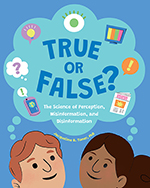
True or False? The Science of Perception, Misinformation, and Disinformation
Written for preteens and young teens in lively text accompanied by fun facts, this book explores what psychology tells us about development and persistence of false perceptions and beliefs and the difficulty of correcting them, plus ways to debunk misinformation and think critically and factually about the world around us.
Advice to stem misinformation

What employers can do to counter election misinformation in the workplace

Using psychological science to fight misinformation: A guide for journalists
More from APA
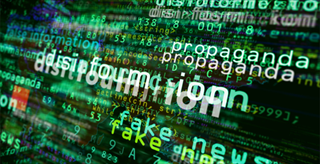
Psychology is leading the way on fighting misinformation
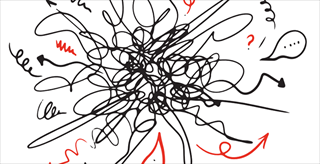
This election year, fighting misinformation is messier and more important than ever

Stopping the spread of misinformation

The anatomy of a misinformation attack
Webinars and presentations
Tackling Misinformation Ahead of Election Day
APA and the Civic Alliance collaborated to address the impact of mis- and disinformation on our democracy. APA experts discussed the psychology behind how mis- and disinformation occurs, and why we should care.
Building Back Trust in Science: Community-Centered Solutions
APA collaborated with American Public Health Association, National League of Cities, and Research!America to host a virtual national conversation about the psychology and impact of misinformation on public health.
Fighting Misinformation With Psychological Science
Psychological science is playing a key role in the global cooperative effort to combat misinformation and change the course on how we’re tackling critical societal issues.
Studying misinformation
Explore the latest psychological research on misinformation and disinformation
How long does gamified psychological inoculation protect people against misinformation?
Perceptions of fake news, misinformation, and disinformation amid the COVID-19 pandemic: A qualitative exploration
Quantifying the effects of fake news on behavior: Evidence from a study of COVID-19 misinformation
Countering misinformation and fake news through inoculation and prebunking
Who is susceptible to online health misinformation? A test of four psychosocial hypotheses
It might become true: How prefactual thinking licenses dishonesty
Federal resources
- Centers for Disease Control and Prevention How to address Covid -19 vaccine misinformation
- U.S. Surgeon General Health misinformation
Resources from other organizations
- AARP Teaching students how to spot misinformation
- American Public Health Association Podcast series: Confronting our disease of disinformation Part 1 | Part 2 | Part 3 | Part 4
- News Literacy Project Webinar: Your brain and misinformation: Why people believe lies and conspiracy theories
- NPC Journalism Institute Webinar: Disinformation, midterms & the mind: How psychology can help journalists fight misinformation
To find a researcher studying misinformation and disinformation, please contact our press office .

IMAGES
VIDEO
COMMENTS
Critical thinking is important for the development of social work skills in direct practice. Social workers help people from all walks of life and come across people or populations with experiences, ideas and opinions that often vary from their own culture and background. Clients may be misunderstood and misjudged if thinking critically does ...
that the critical thinker can be thought of in terms of a set of 'requisite intellec-tual resources'. These ideas have also been used successfully by Ford et al. (2004, 2005) in their research on criticality with students in social work education, and are explored below. The intellectual resources for critical thinking are:
'Critical thinking is one of the most sought-after skills in social work', is an introductory statement made by the authors who proceed to demonstrate powerfully that this skill is essential for safe, effective social work practice.
As the authors of this book suggest, critical thinking is a 'sought after' skill in social work practice, yet is something that can be difficult for students to conceptualise. This practical text is written in such a way, that it aims to speak directly to student social workers to help them understand the concept, and application of ...
Chapter 1: Who is the book for and how can it help? Chapter 2: Critical thinking: some general principles. Chapter 3: Professional judgement. Chapter 4: Using knowledge in practice. Chapter 5: Critical reflection. Chapter 6: Writing reflective academic assignments. Chapter 7: Developing critical practice.
Critical thinking as a process can appear formal and academic, far removed from everyday life where decisions have to be taken quickly in less than ideal conditions. However, now more than ever, it is seen as a vital part of social work, and indeed any healthcare and leadership practice within the current agenda for integration, and in the post Francis inquiry health care context.
The paper examines the role of critical thinking in an experience-based model of social work education. Within this model, the development of a critical approach to our own understanding of, as well as to existing knowledge about, the world is fundamental for students and educators alike. ... As well as describing the critical thinking ...
Critical thinking is a key construct in social work education; however, a universally accepted definition of the construct remains elusive. To determine collective agreement in meaning and viable methods of assessment for critical thinking in social work education, researchers administered an online survey to a national sample of social work ...
Critical thinking in social work. This training video covers critical thinking as a core social work competency. skill. It is aimed at especially first and ...
Critical thinking in social work is not critical thinking in philosophy, education, or even nursing; its use in social work sheds light on purposes, problems, and conflicts unique to the field. Thus, through an analysis of what the social work literature has taken critical thinking to mean, this review can also inform discussion of how social ...
Discussion of the nature of critical thinking and the ways in which it can be enhanced has increased in recent years among social work educators, and yet little is known about the impact of MSW ...
Critical thinking can appear formal and academic, far removed from everyday life where decisions have to be taken quickly in less than ideal conditions. It is, however, a vital part of social work, and indeed any healthcare and leadership practice. Taking a pragmatic look at the range of ideas associated with critical thinking, this Fifth ...
Critical thinking as a process can appear formal and academic and far-removed from everyday practitioner experience. This second edition of enables post-qualifying students to develop their analytical skills in line with their everyday experiences. By placing emphasis on writing, communication and critical reflection, this book challenges the view that theory and critical awareness are the ...
Dr Joanna Rawles. presentation and discussion for anyone who has a role in supporting and enabling social work students and practitioners to embed critical thinking into their reflection. Based on the following book chapter Rawles, J. (2023) 'Critical thinking and reflective practice' in Parker, J (ed) (2nd Ed) (2023) Introducing Social Work:
The paper examines the role of critical thinking in an experience-based model of social work education. Within this model, the development of a critical approach to our own understanding of, as ...
One method used in teaching critical thinking over the past decade is logic modeling. The term, also called program modeling, refers to a process of social. work planning, while logic model refers to. the standardized, structured output of this process. We have found logic model ing useful in practice courses and as an.
In a meta-analytic review of critical thinking in social work education, findings revealed variability in research designs, methods, and subsequent findings. The 10 studies reviewed assessed different components of critical thinking and highlighted different potential moderator variables. Although there are significant limitations to all the ...
This critical review mines the literature on critical thinking for insight into the kinds of thinking social work scholars consider important. Analysis indicates that critical thinking in social work is generally treated as a form of practical reasoning. Further, epistemological disagreements divide 2 distinct proposals for how practical ...
This article reviews the literature on teaching critical thinking in social work and human services education. In doing so, it outlines educational strategies that have been used to promote critical thinking in social work, and argues that understanding the client or consumer perspective is a vital part of the critical thinking process.
Critical thinking skills are used every day in a myriad of ways and can be applied to situations such as a CEO approaching a group project or a nurse deciding in which order to treat their patients. Examples of common critical thinking skills. Critical thinking skills differ from individual to individual and are utilized in various ways.
More Critical Thinking Resources. The answer to "What is critical thinking?" is a complex one. These resources can help you dig more deeply into the concept and hone your own skills. The Foundation for Critical Thinking; Cultivating a Critical Thinking Mindset (PDF) Asking the Right Questions: A Guide to Critical Thinking (Browne/Keeley, 2014)
Constructivism is a learning theory that emphasizes the active role of learners in building their own understanding. Rather than passively receiving information, learners reflect on their experiences, create mental representations, and incorporate new knowledge into their schemas. This promotes deeper learning and understanding.
Critical thinking in the context of social work can be seen as a conscious act, of which an important part is defining the problem at hand (Schön, 1987) and as a form of practical reasoning that ...
It's important to find an employee who adds value to your workplace in the form of soft skills. Make sure to ask the right interview questions to determine if your new hires have skills such as: communication, teamwork, critical thinking, adaptability, and leadership, along with many more. How can you train soft skills?
2. Social emotional learning prompts and journals. Teaching social-emotional learning (SEL) is critical to student success, but it can be difficult to find time for it during the busy school day. So why not take advantage of those first few moments of class to support it? Help students prepare their minds and bodies for learning by assigning a daily check-in or SEL activity as morning work or ...
STEM education, now also known as STEAM, is a teaching approach that combines science, technology, engineering, the arts and math.
Thinking about it, in 2009, the Soft Skills Lab (SSL) with the intention of giving students the possibility of complementing their curriculum with soft skills, among which is critical thinking, was created in our university. 2 Being both teachers in social work and critical thinking at the LCT, we decided to carry out this exploratory study to ...
Work backwards. Experiment with filling in the four sections of your SWOT analysis in a different order, to stimulate new ways of thinking. Working backwards, in particular, from threats to strengths, may cast new light on the situation. Get together.
Learning to be a critical consumer of information and thinking before you share can help protect everyone from false information online. ... People are more likely to share misinformation when it aligns with personal identity or social norms, when it is novel, and when it elicits strong emotions ... a key role in the global cooperative effort ...
The book is divided into three parts - An Introduction to Critical Thinking and Analysis; An Introduction to Critical Reading and Writing; Critical Thinking and Analysis in Practice. Within this framework there are a total of nine chapters and each of these chapters have the following components: Theoretical Background; Relevance to Social ...